Our second day of Angkor explorations is devoted to wandering around the massive Angkor Thom group of temples, with the addition of the bonus temple of Preah Khan, just beyond the old city walls.
Yesterday, we found ourselves largely alone exploring Angkor Wat, the big daddy of Khmer temples, and the “Tomb Raider” jungle temple of Ta Prohm. That was a Sunday.
With most domestic tourists back to work, Monday promises to be an even quieter day here in one of the world’s top destinations in the time of Covid.
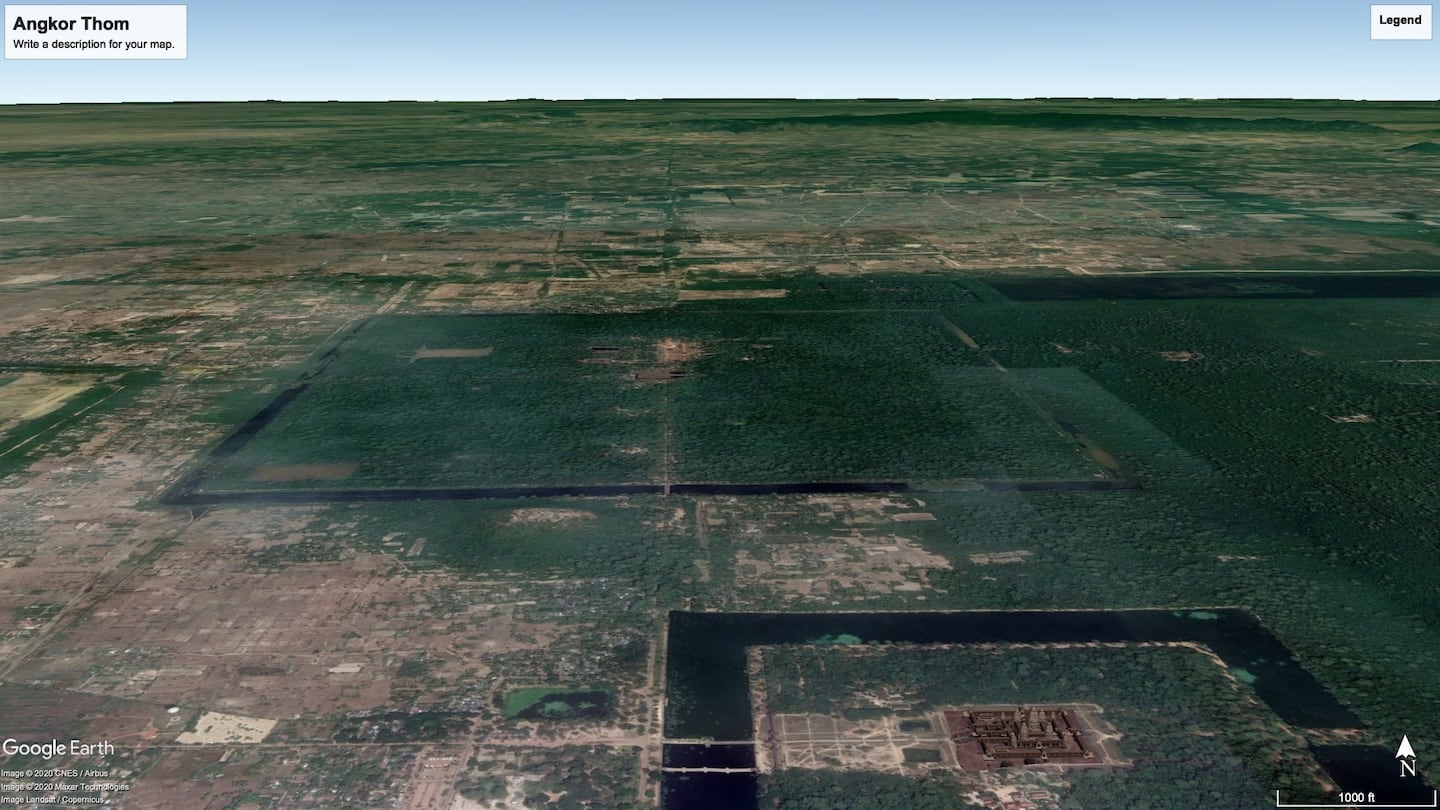
The Big City of Angkor Thom
What now comprises Angkor Archeological Park is believed to be the largest pre-industrial city in the world. And Angkor Thom was its city center at the height of the Khmer Empire.
In fact, Angkor Thom literally means “Big City”.
Angkor Thom measures 3 km by 3 km (2 mi. x 2 mi.) and, like Angkor Wat, is completely surrounded by a manmade moat, constructed by diverting water from the nearby Siem Reap river.
There are four primary access points to the “island” at each of the four cardinal points. Prior to the city’s abandonment (sometime before the 17th century), access in and out of the city would have been controlled at these points where ornate gates were constructed.
These city gates survive to the present day and visitors pass through them on their way to the various sites on Angkor Thom.
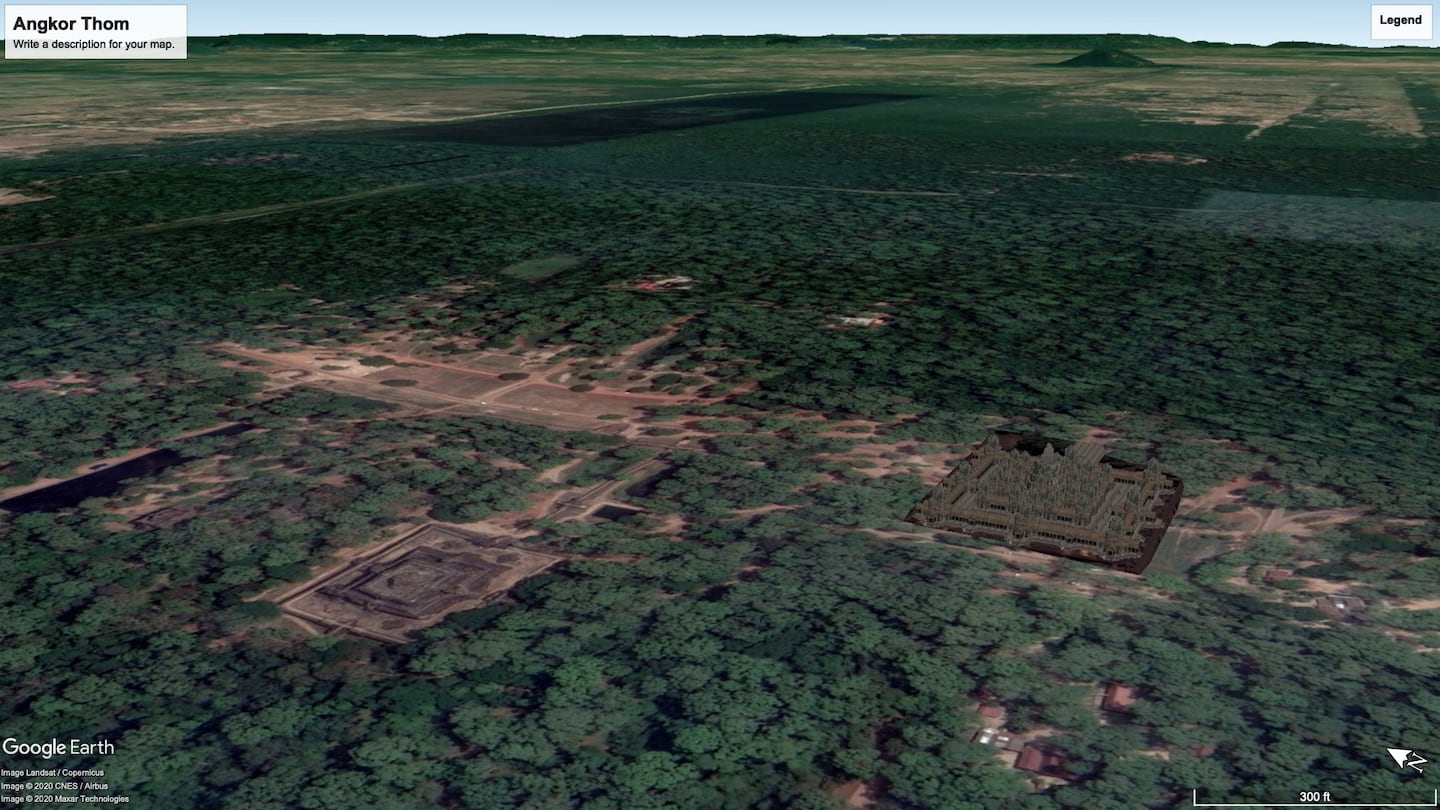
Above is the area we’re focusing on today, starting with the state temple of the Bayon on the right, then hiking in a clockwise direction around the central group of temples, ending at the contemporary Buddhist temple of Wat Preah Ang Sang Tuk, where we’ll hop on a remorque and head to Preah Khan (top-left corner of the image).
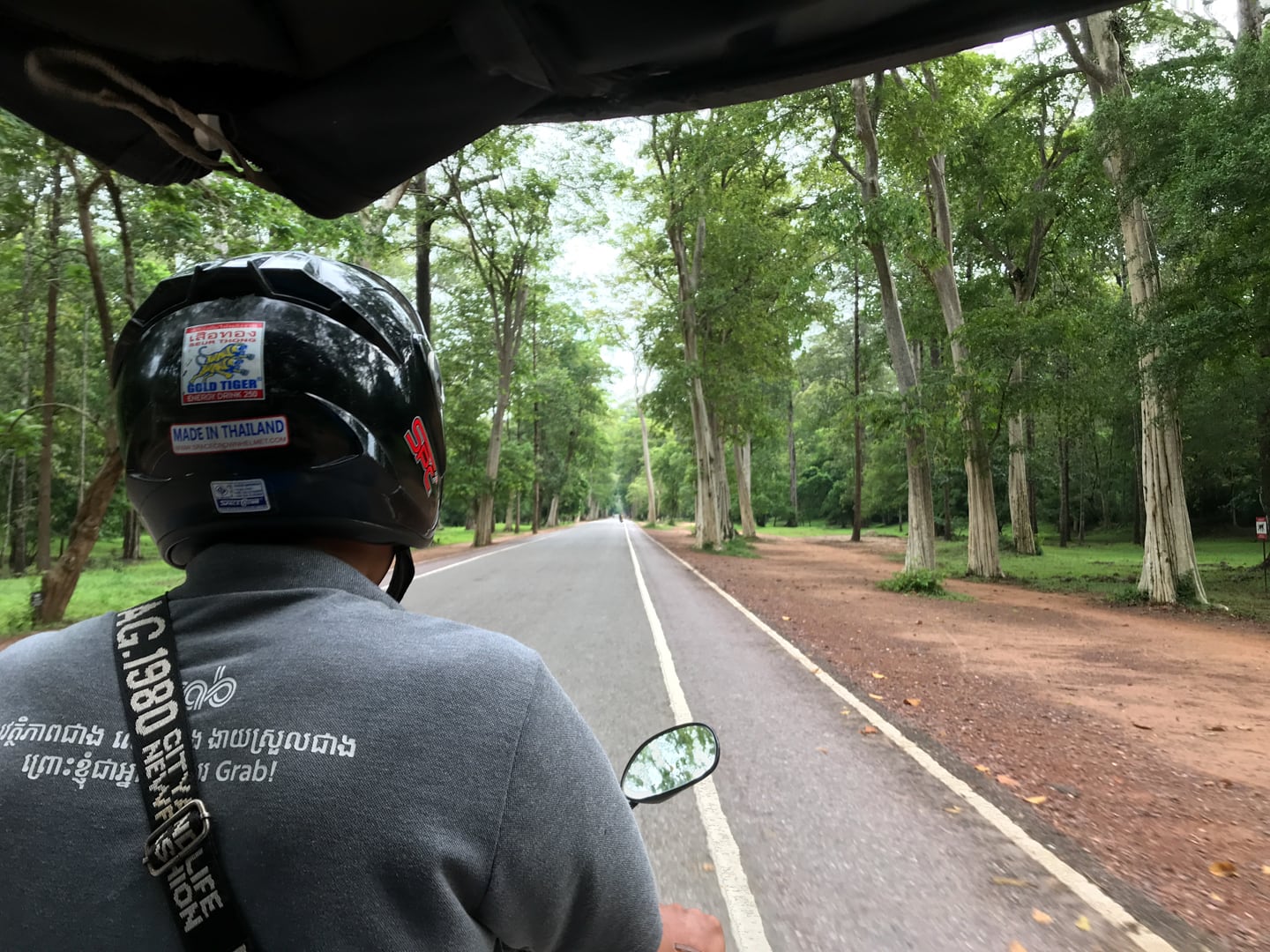
From our Airbnb in the Siem Reap city center, it’s a pleasant 30-minute remorque ride to the Bayon.

Yesterday, we hired a remorque and driver for the morning, but today we decided to take a Grab from Siem Reap to the Bayon, then get a Grab when we’re finished exploring Angkor Thom.
One of the most striking things about our morning ride to Angkor Thom is passing the seemingly endless string of international hotels and luxury resorts along Charles de Gaulle closed down and gated off due to Covid.
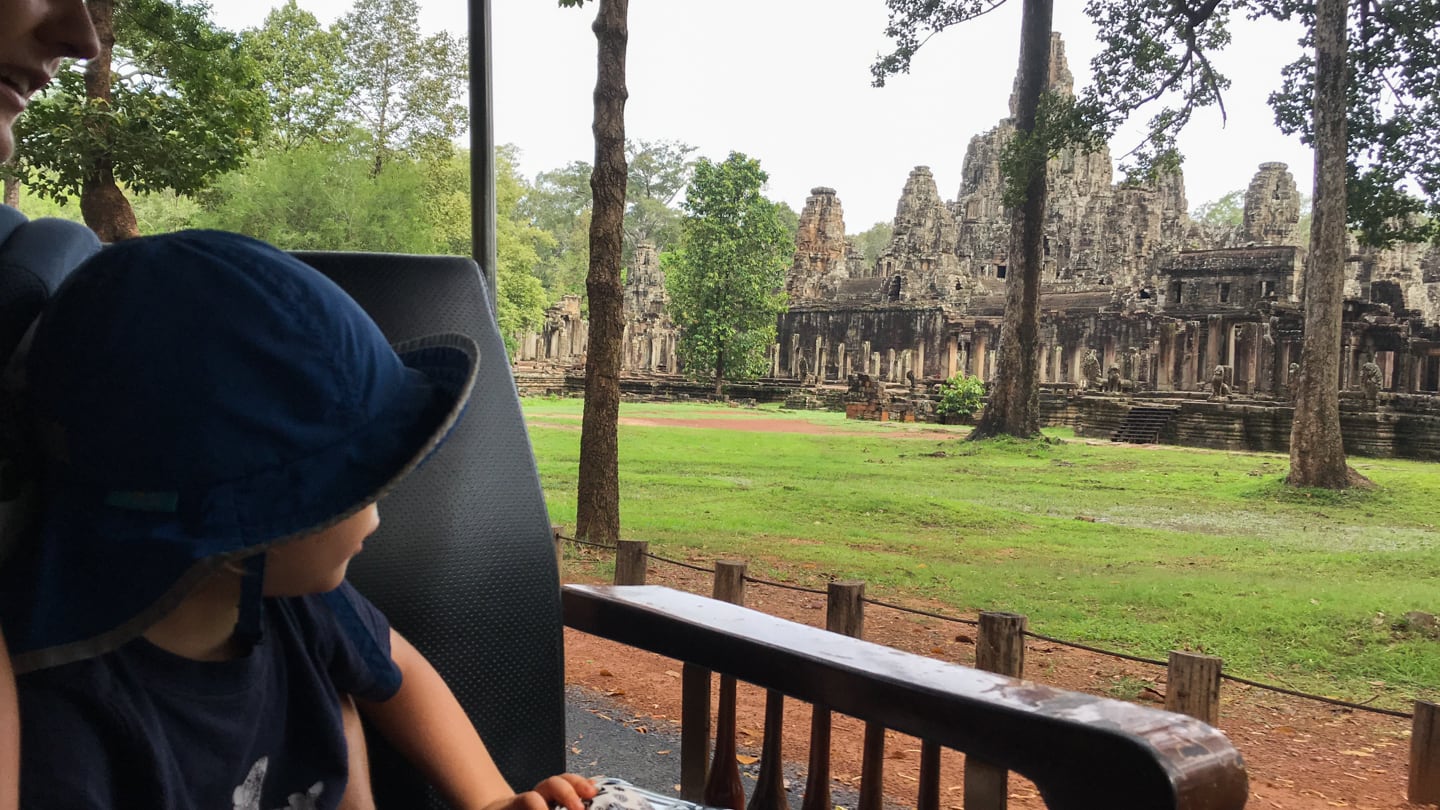
The Bayon: Spiritual Center of Angkor Thom
No other archeological site in Angkor comes close to comparing to Angkor Wat. But in 2012, the Bayon was a close second for us.
The Bayon is almost a condensed version of Angkor Wat, where all of the inner courtyards have been scrunched into narrow, open-air corridors, resulting in a closed-in, claustrophobic feel.
In this regard, the Bayon feels more like exploring the ruins of a royal residence rather than a Khmer temple complex.
And in fact, it is still a residence to multitudes, as we soon find out.
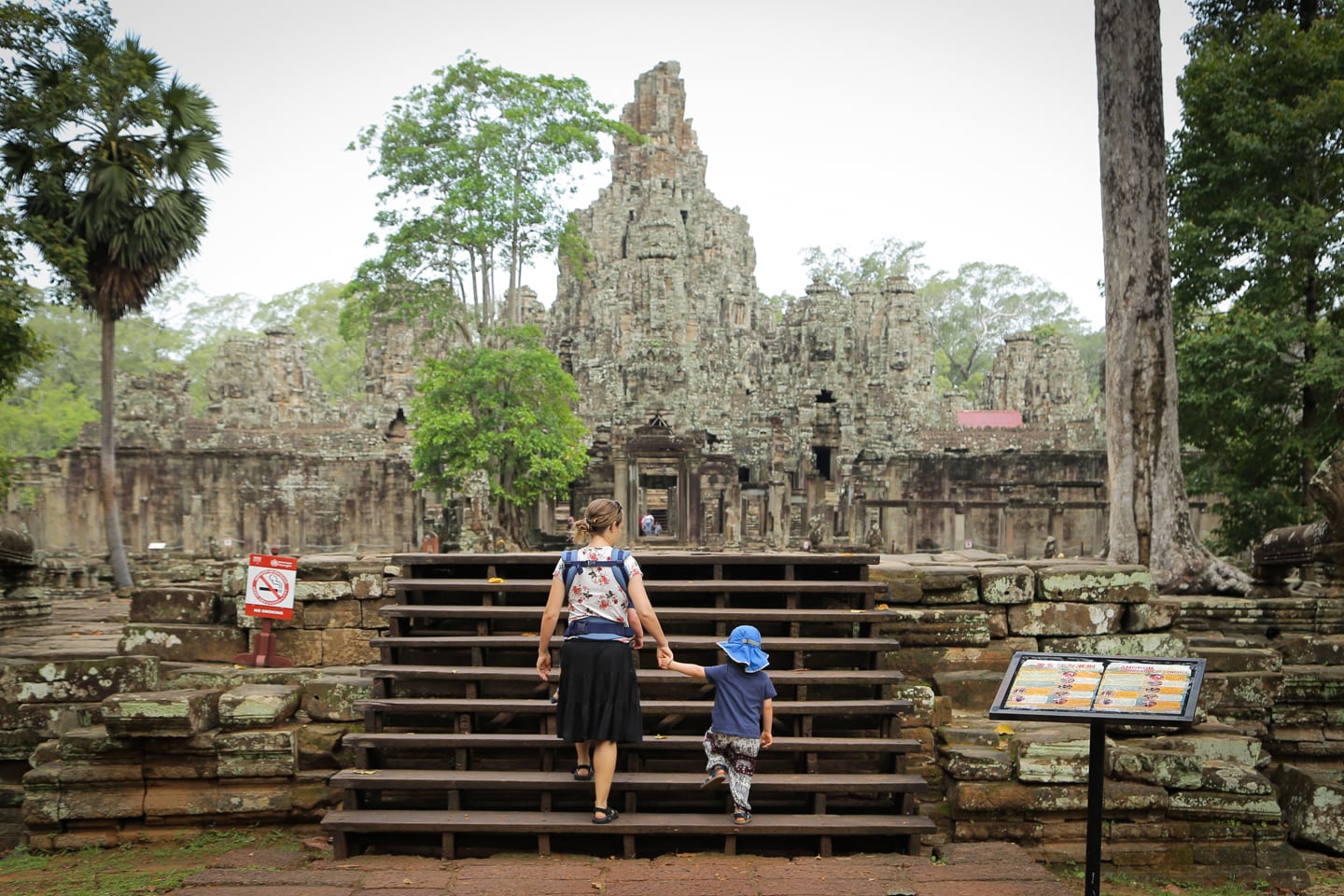
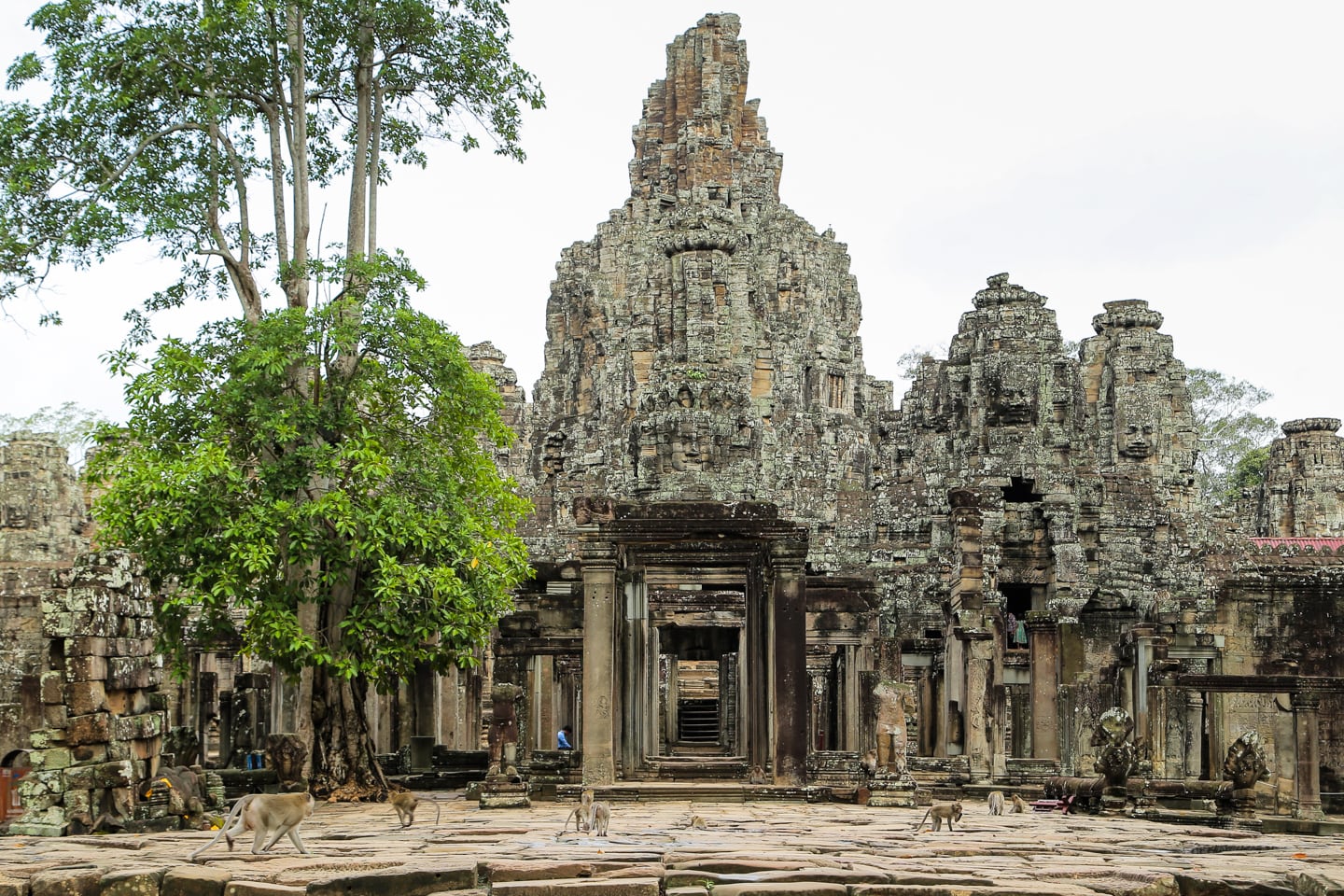
Not another visitor in sight, but we are far from alone! Over a dozen macaque monkeys are on hand to greet us upon entering.
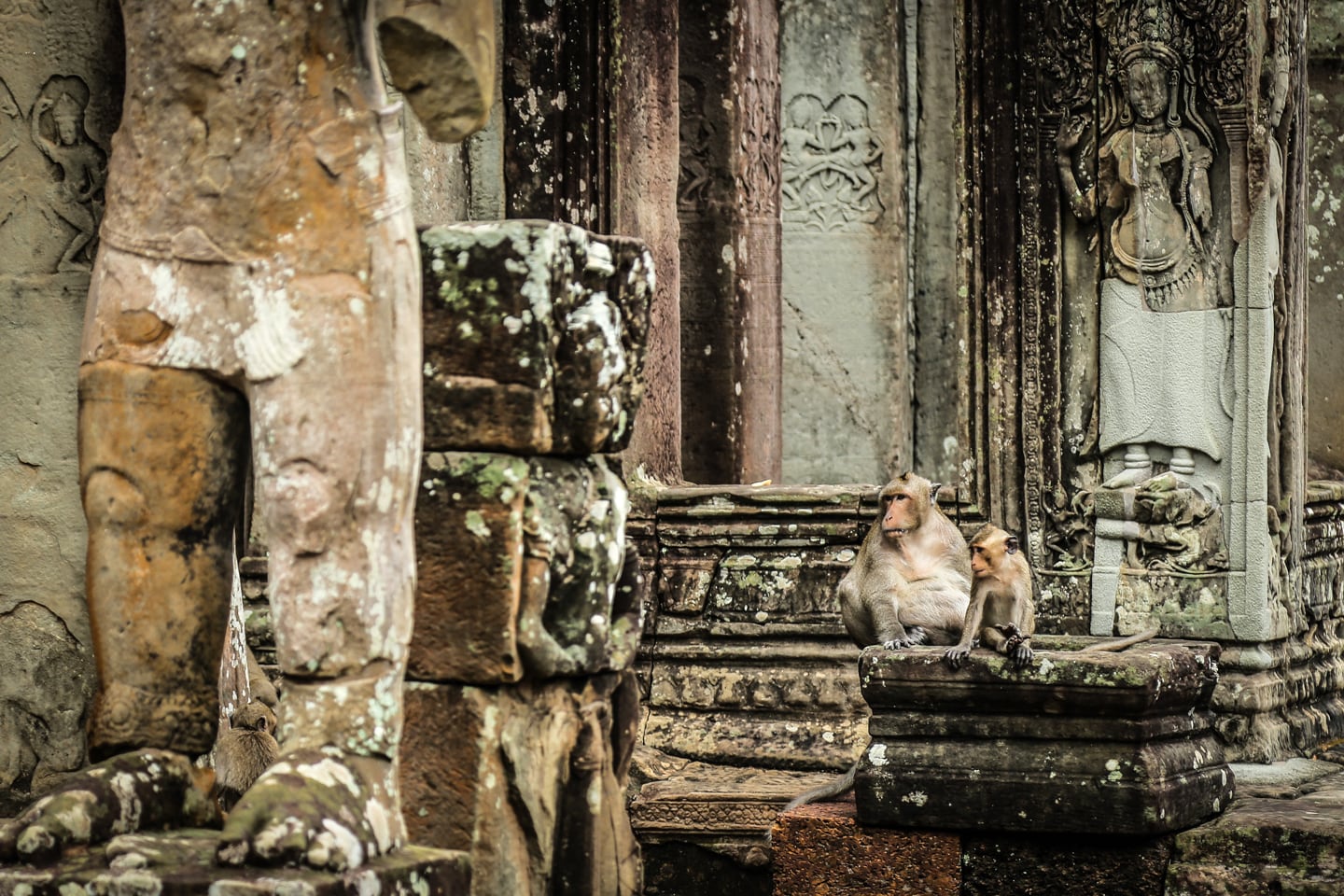
We proceed with caution, having had enough encounters with macaques over the years to know better. However, these temple monkeys seem different — non-aggressive, relaxed, and almost joyful with knowing eyes.
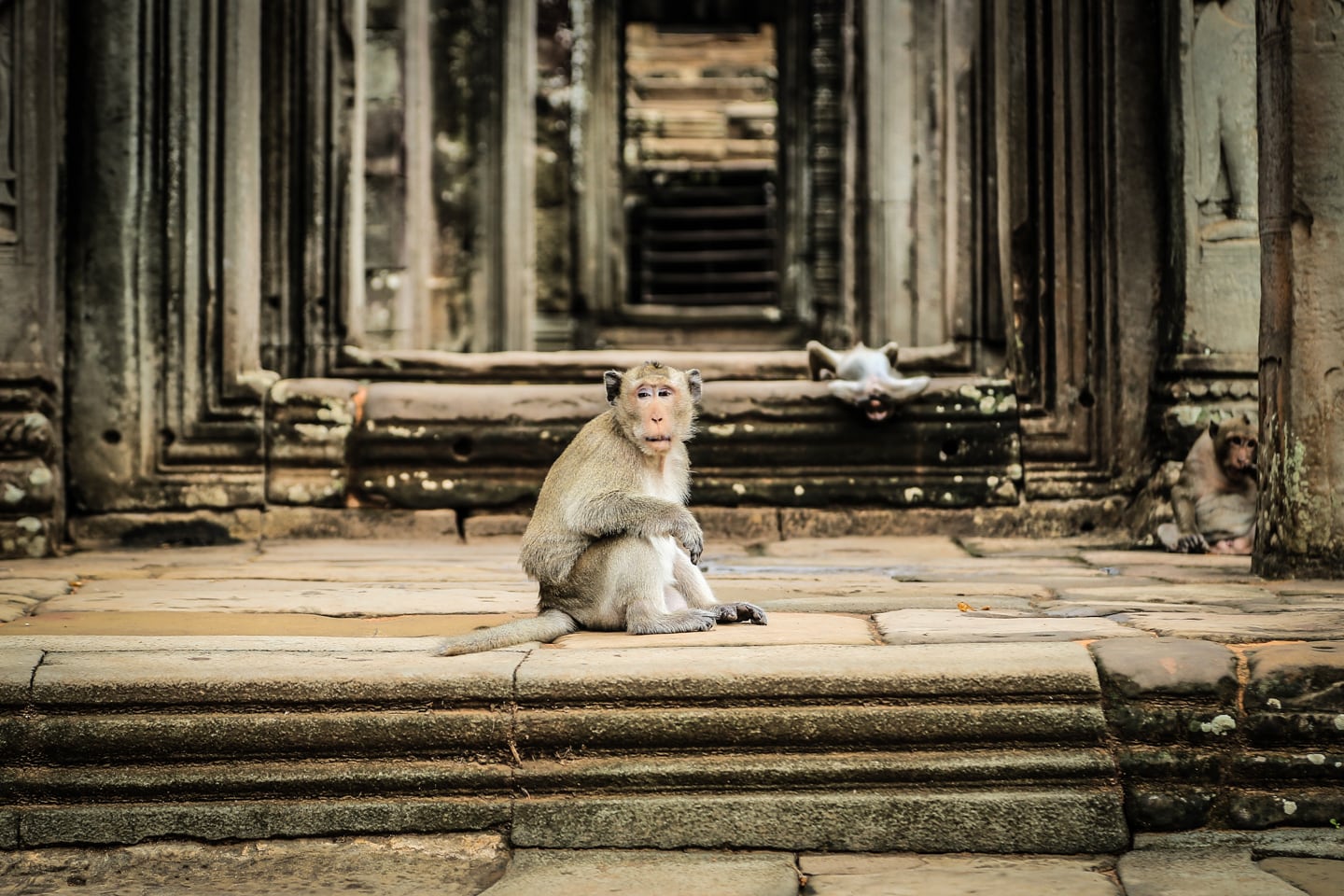
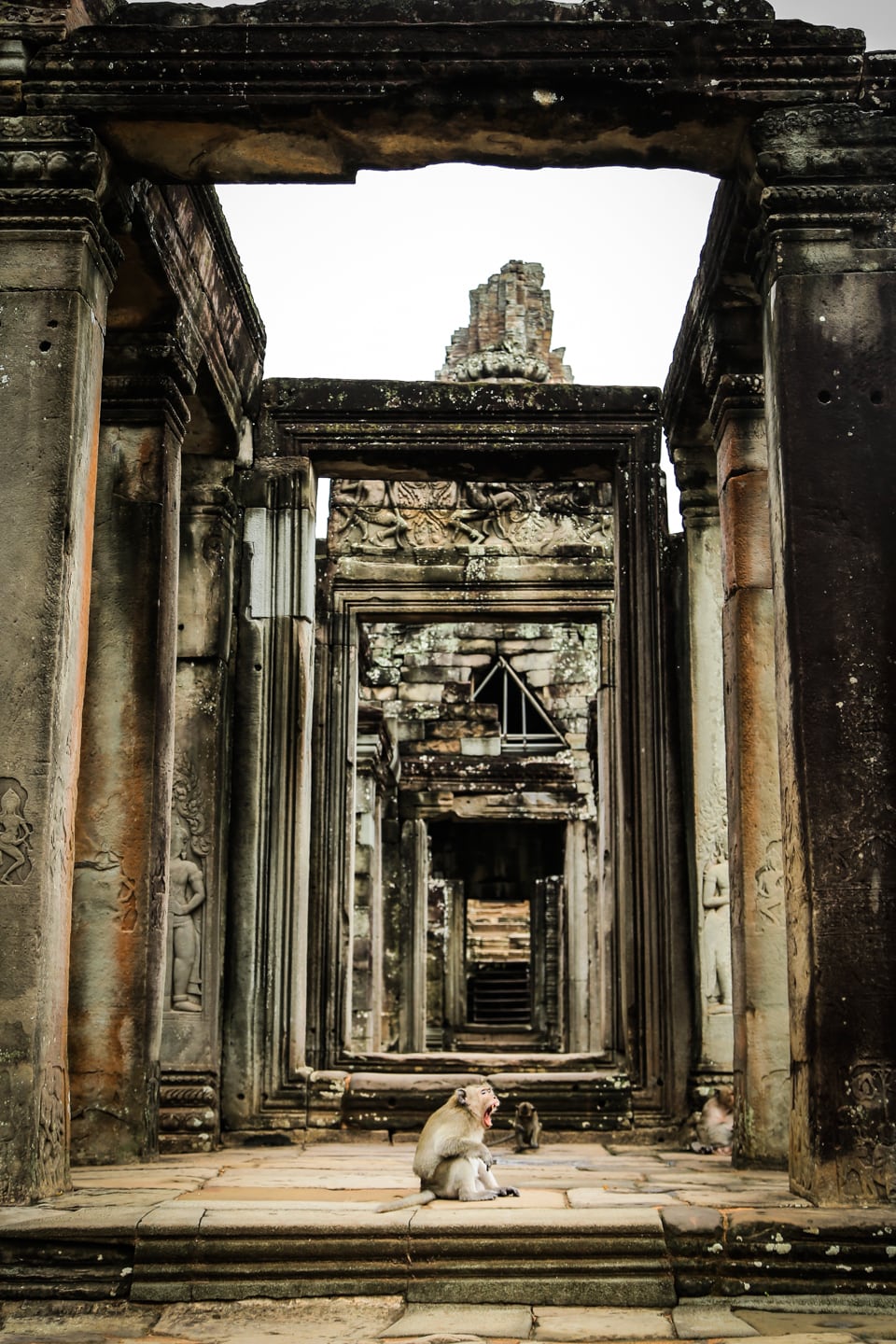
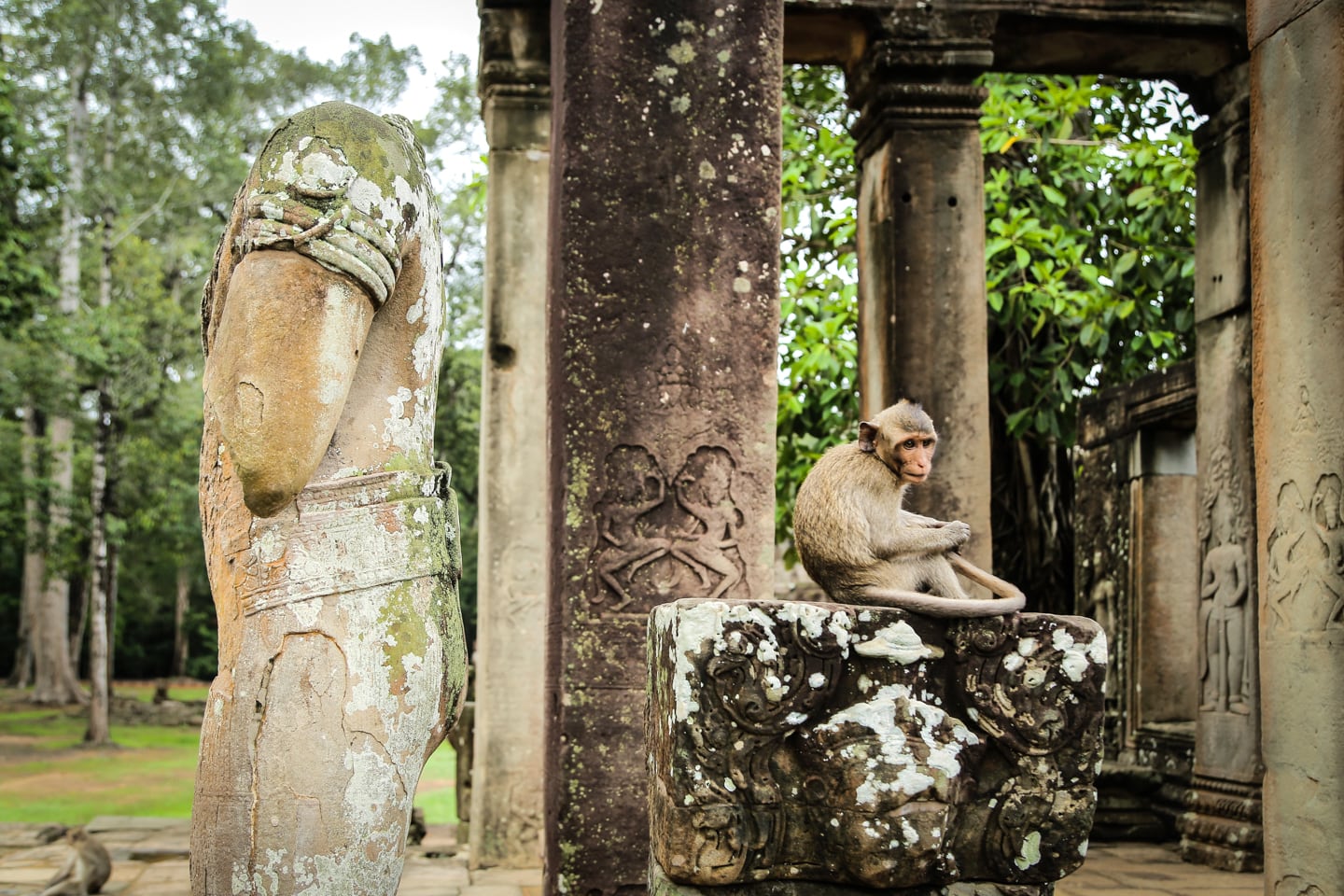
Enlightened macaques? Reincarnated monks? It’s impossible to say.
Regardless, they seem to be unmoved by our presence and almost welcoming and ushering us to enter.
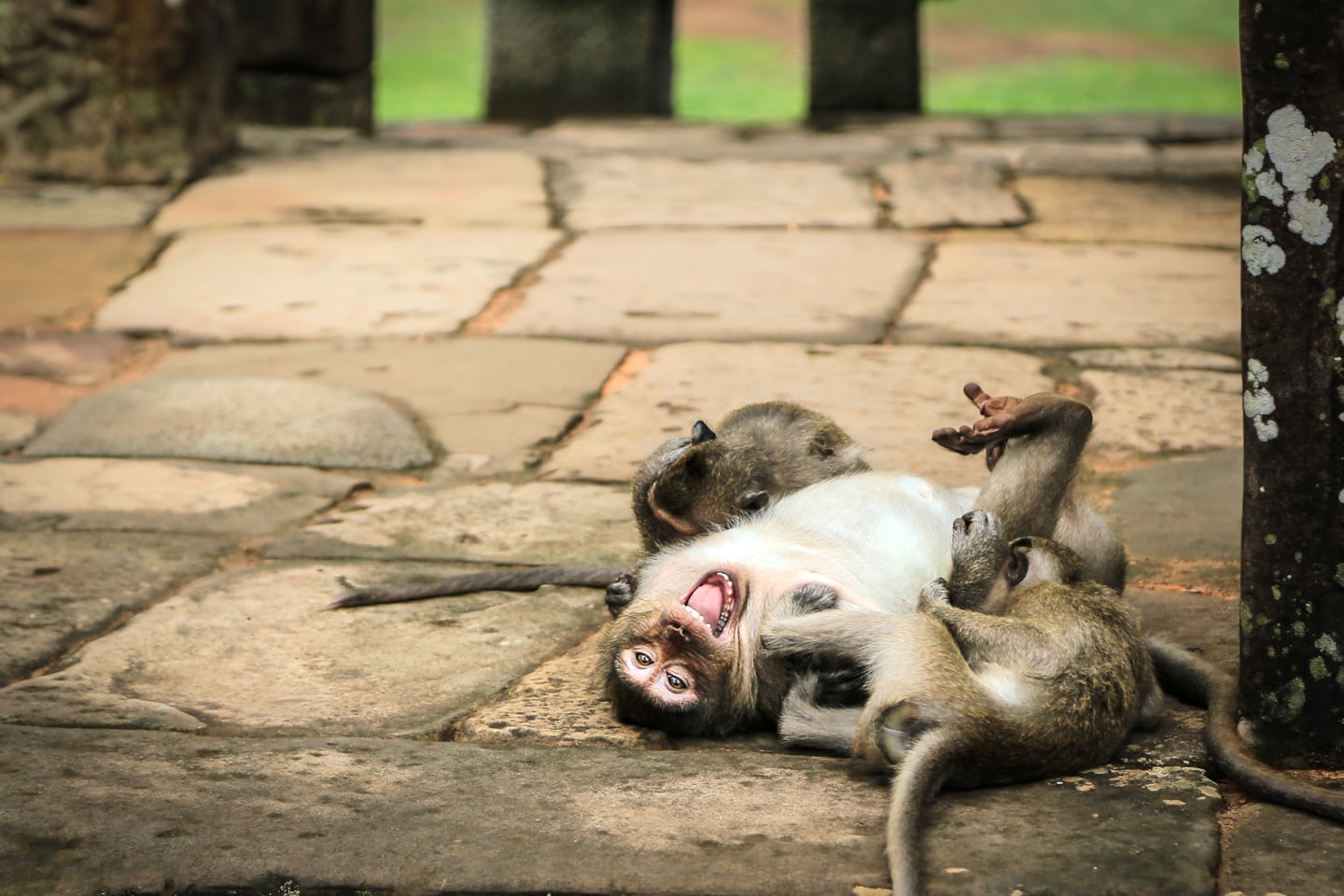
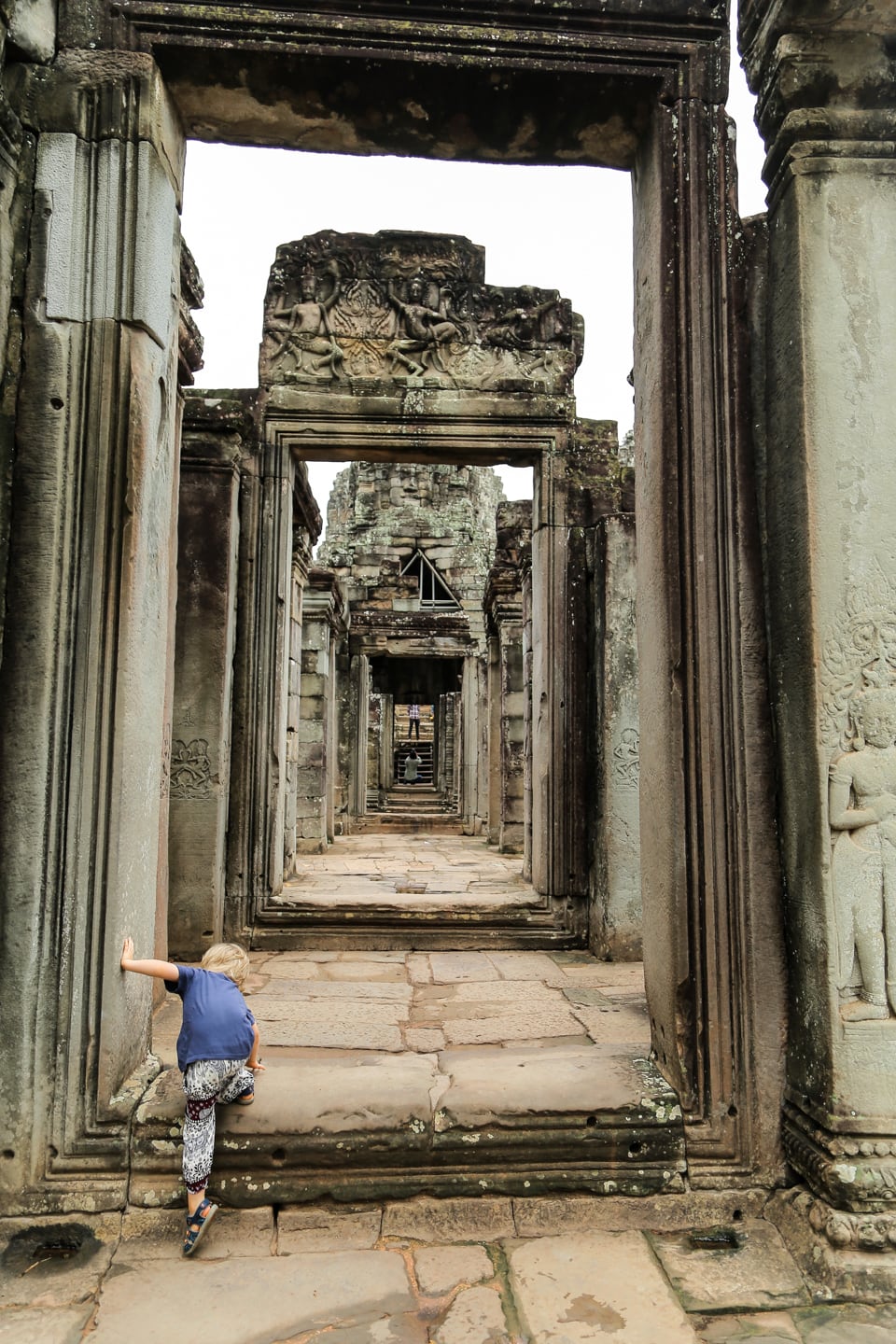
One of the defining features of the Bayon are the human faces carved into the stone towers that dominate the temple.
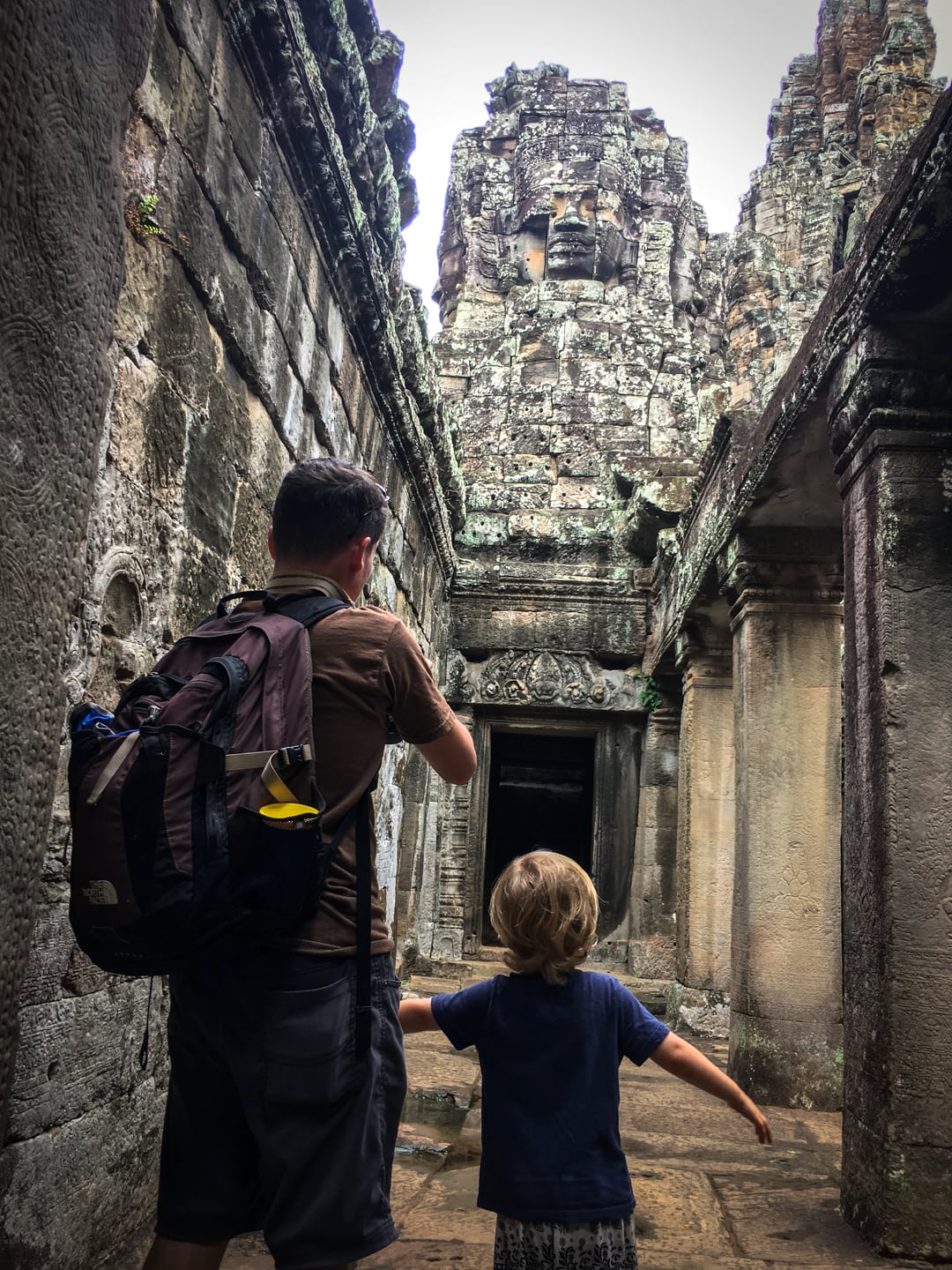
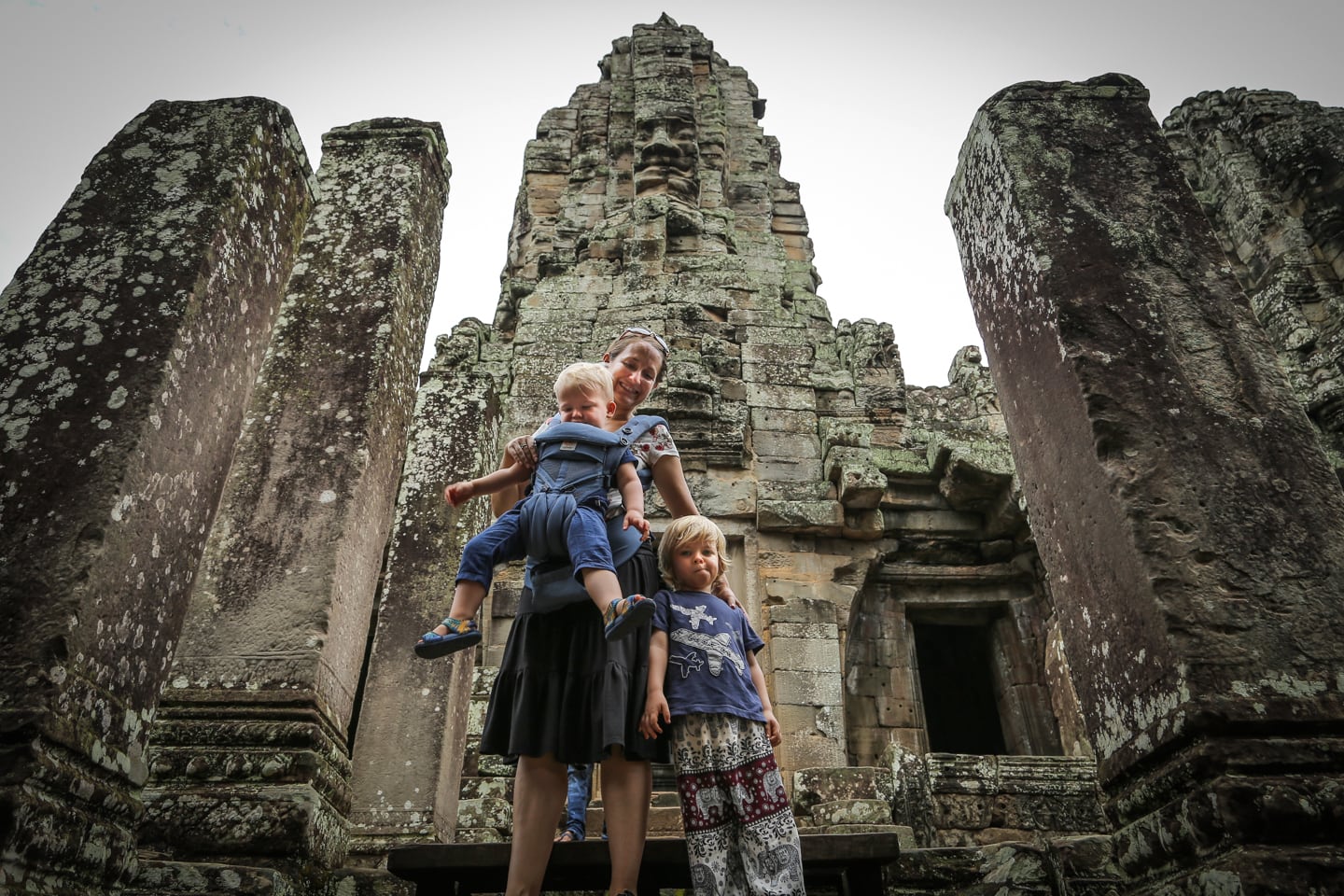
The Bayon derives its name from a mispronunciation of Banyan.
When it was constructed in the 12th/13th centuries, the temple’s original name was “Victory Mountain” (Jayagiri).
It was later named for the Banyan tree under which the Buddha attained enlightenment some time after its conversion to a Buddhist temple.
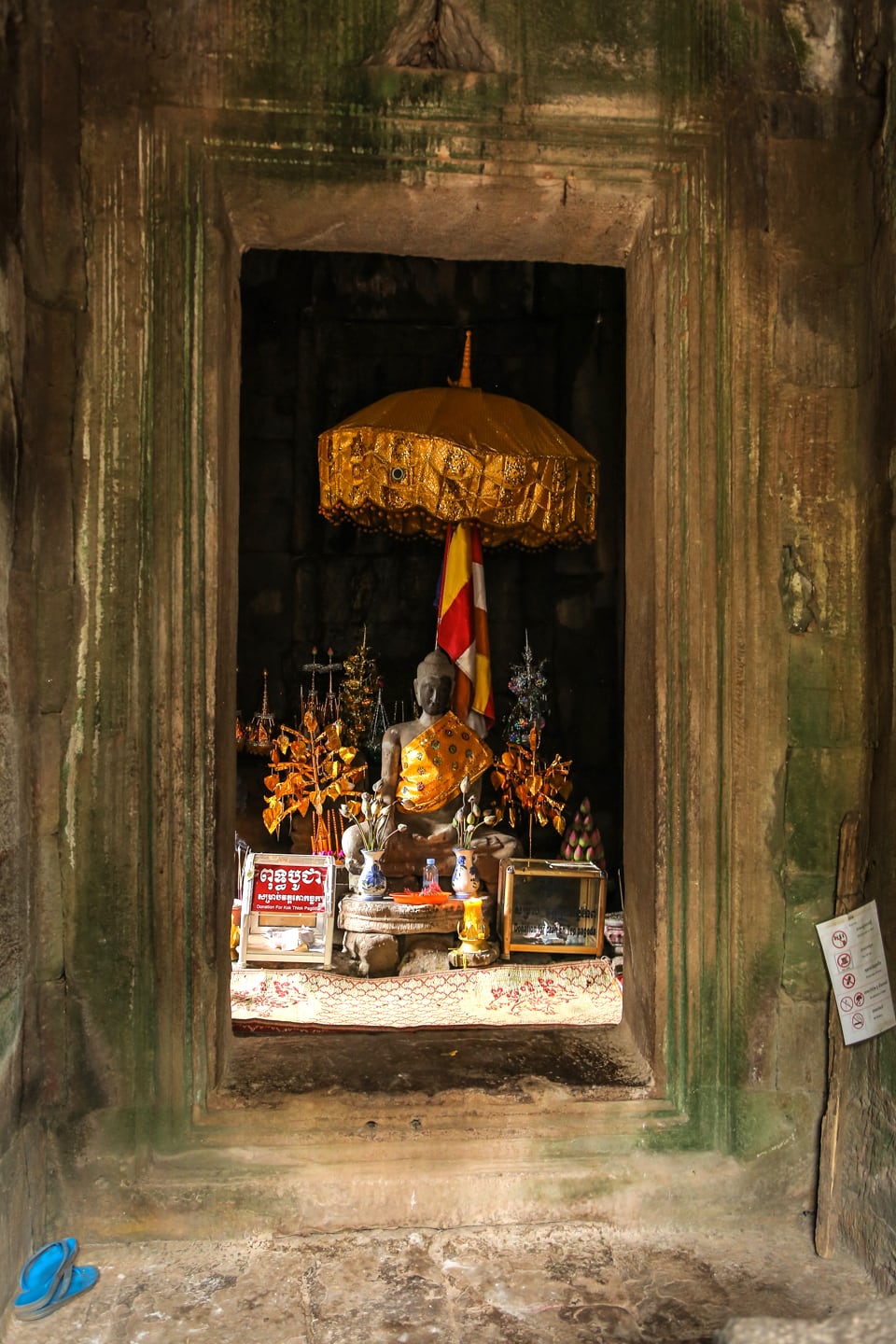
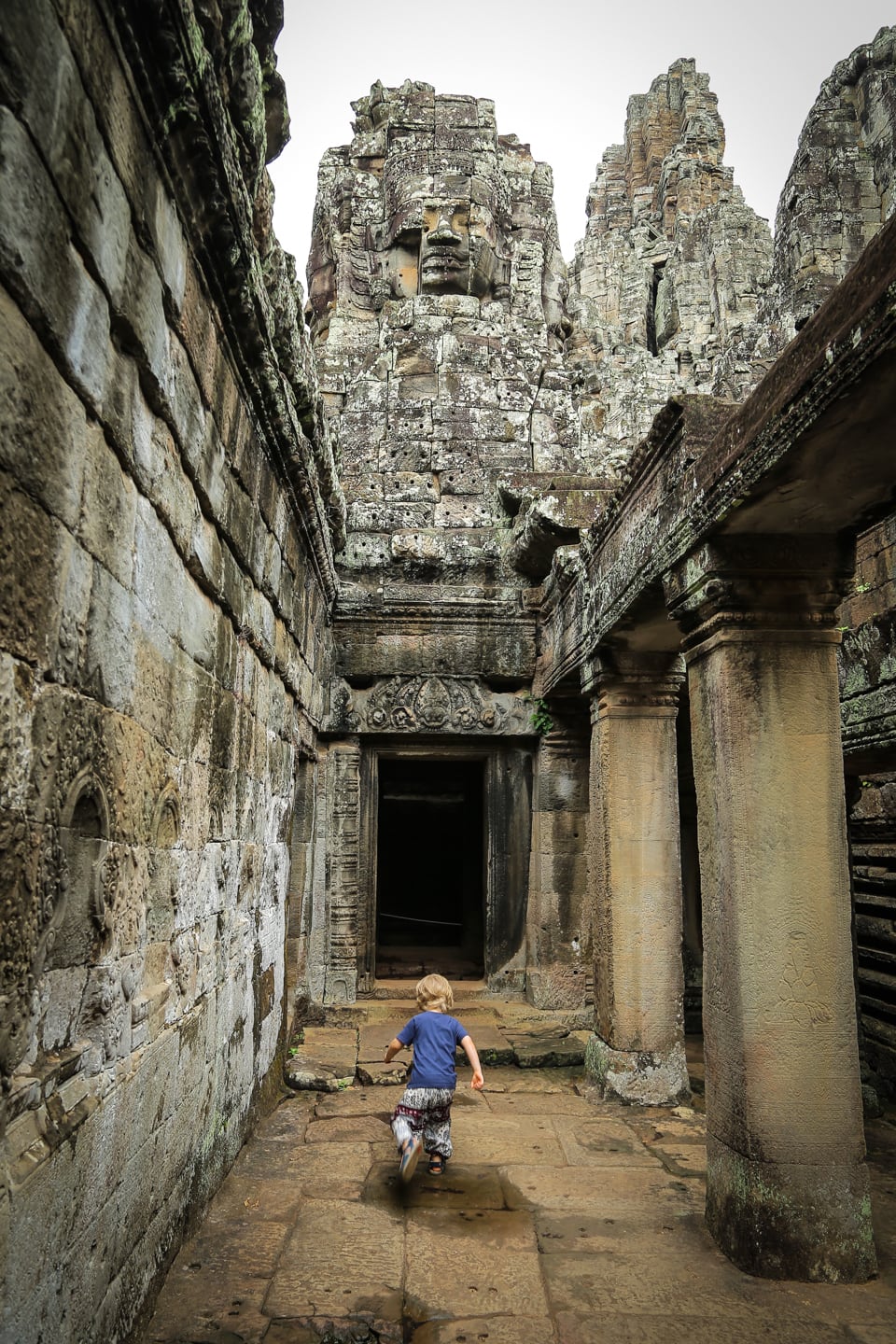
Noe loved this temple (what four-year-old wouldn’t?). Riley, on the other hand, voiced his displeasure throughout the tour.
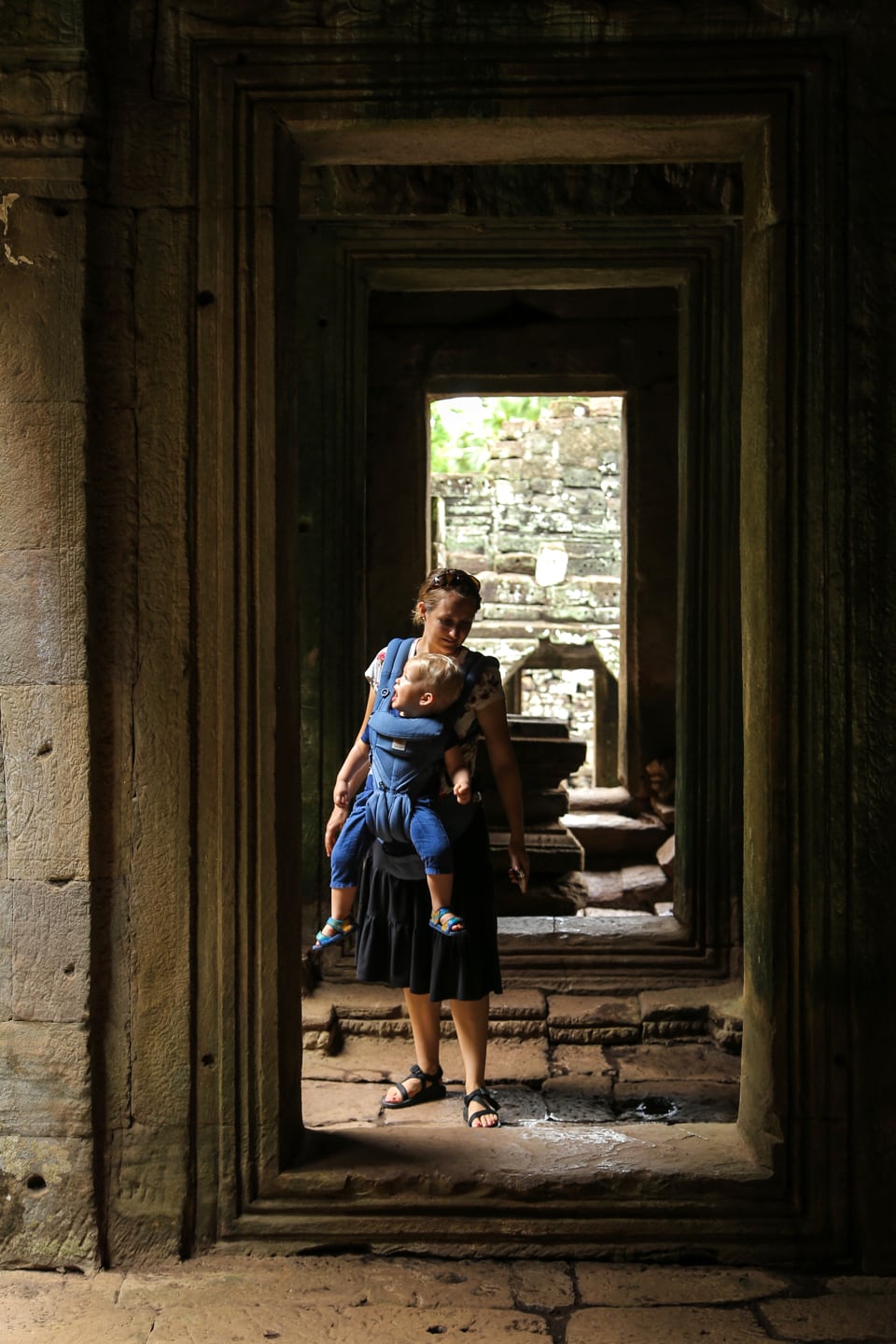
The kid really wanted to walk and explore like his brother, and I don’t blame him.
However, in this particular temple with uneven surfaces, drop-offs, and Noe on the loose, it simply would have been too much for Lori and I to manage well, so we took turns wearing him.
As a result [of the constant protest and screaming], our self-guided tour of the temple ends up a lot more rushed than we would’ve liked.
Such is life (and ancient temple explorations) with two toddlers.
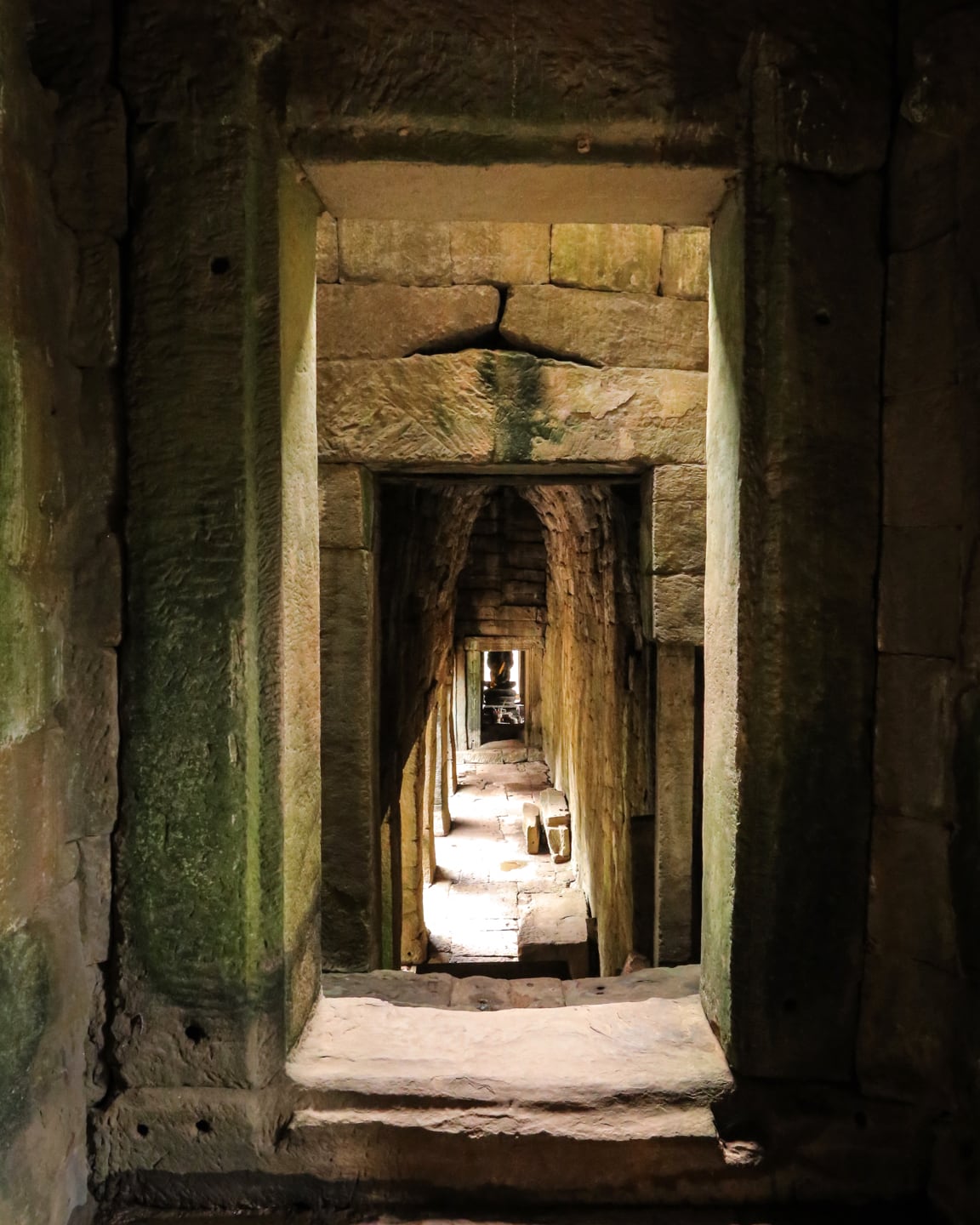
I don’t end up in a lot of pictures because I generally do the bulk of the picture snapping on these outings. But Lori does occasionally snap one or two…
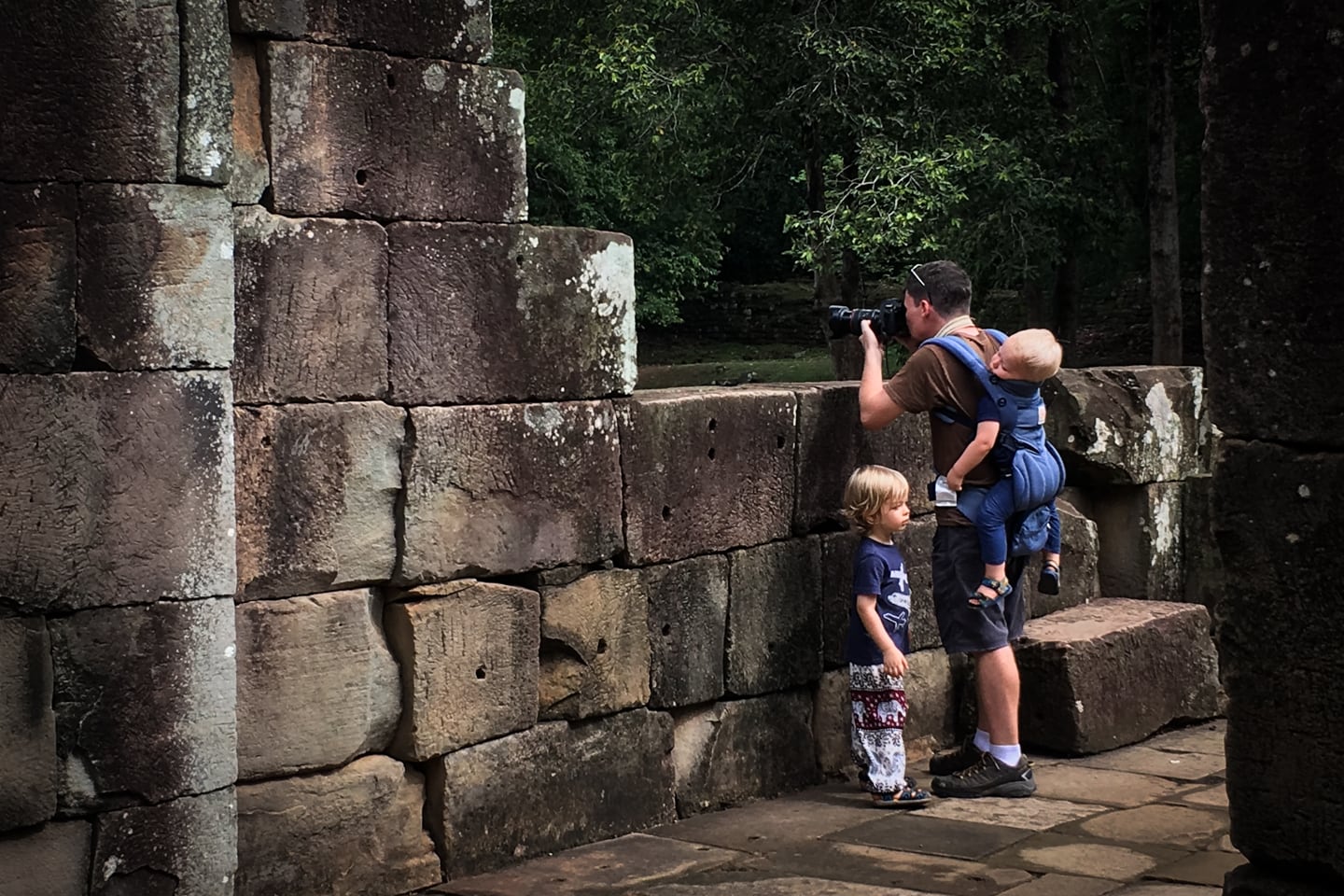
A good general rule of thumb here in blog photos lately is that if you only see mommy-plus-one in a photo, its a sure thing that the other one is either yanking out my leg hair or trying to file an urgent petition with daddy while the photo is being snapped.
Such is the case with the following photos of the Baphuon, which, upon later review gave me a good chuckle from how much they evoke the airy, carry-free feel of a fun little photo session.
If only.
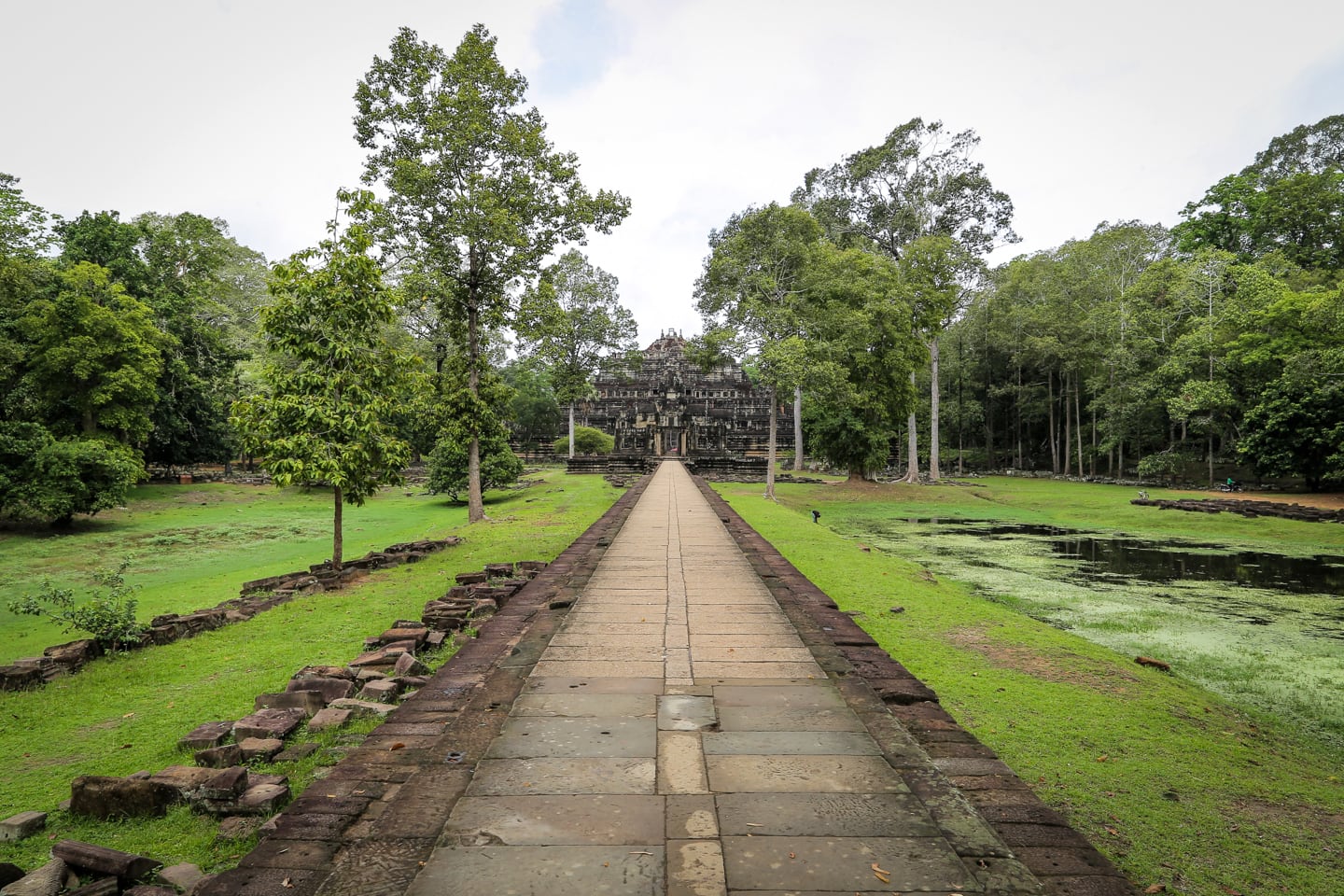
Scaling the Baphuon “Temple Mountain”
The Baphuon was one of those happy surprises we always hope for when visiting UNESCO archeological sites.
We had read nothing about it prior to our visit and only stumbled upon it after leaving the Bayon en route to find the Terrace of the Elephants for the boys.
We find ourselves on a dirt path running parallel to the Royal Square, which leads us straight to the main gate of the temple causeway.
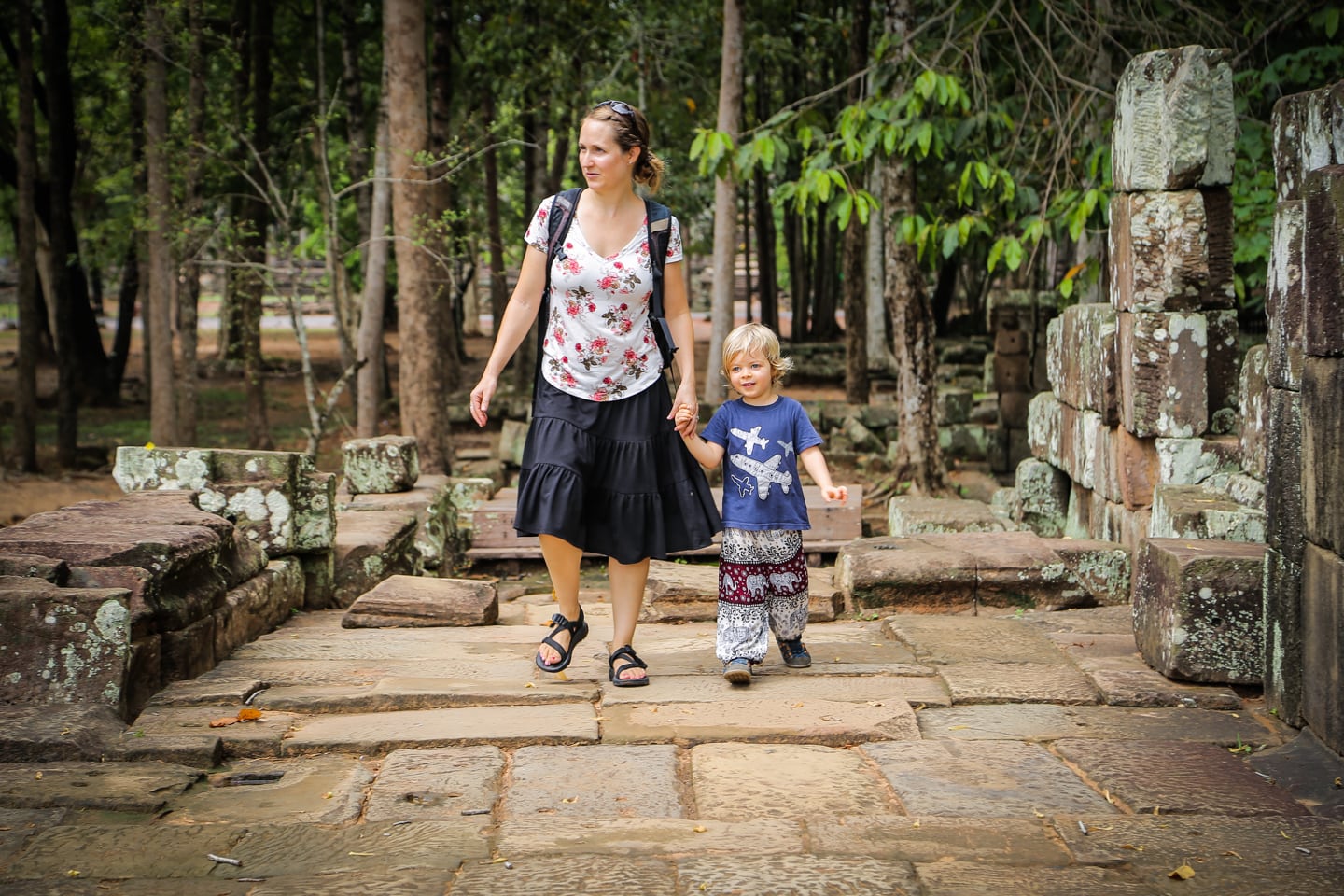
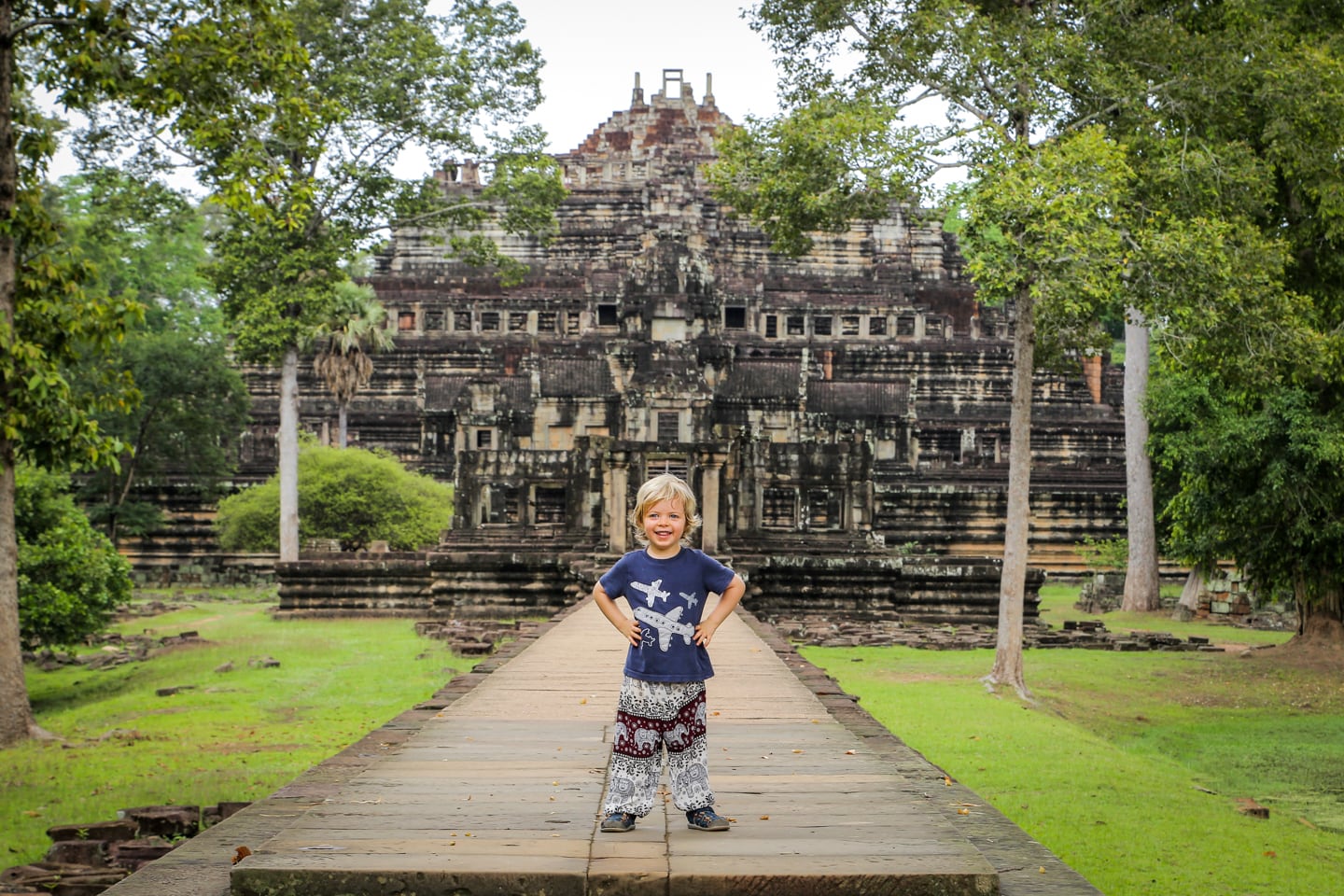
It’s easy to take for granted the sheer enormity of the archeological and restoration efforts that go into some of the world’s great heritage sites.
The Baphuon is an impressive structure with an incredible restoration story largely unknown to its hundreds of thousands of annual visitors.
Originally constructed as the state temple of Angkor in the mid-11th century, the Baphuon predates Angkor Wat by over a century.
In the late 15th century, it was converted to a Buddhist temple and an enormous 70-meter-long reclining Buddha was installed on the west side of the structure.
But here’s the crazy part. By the 20th century, the temple had mostly collapsed!
The Baphuon’s fall into ruin isn’t exactly surprising (most structures like this do at some point).
What’s crazy is how the temple went from total ruin and collapse to what we see today, taking over half a century to achieve.
Take another look at the image above (Baphuon today). Now, take a look at this one from 1940:
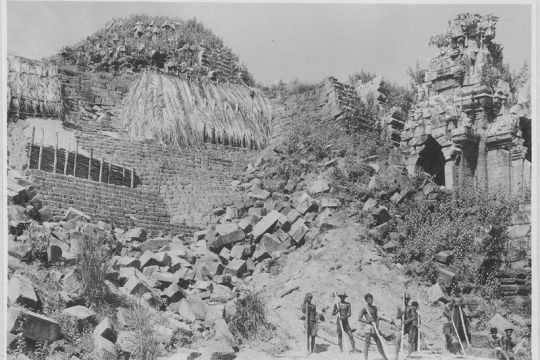
But the temple wasn’t simply restored from what you see in this photograph. Oh no. The entire Baphuon would later be completely dismantled.
Both of these photos (above and below) are from an excellent resource detailing the epic reconstruction of the Baphuon (in French) that I would highly recommend (via Google translate for non-French speakers).
The restoration of the Baphuon has been called the “largest 3D jigsaw puzzle in the world,” and it’s easy to see why.
Beginning around 1960, the entire temple was slowly dismantled, piece by piece, the core reinforced, and all 300,000 pieces painstakingly numbered and catalogued.
In the dark years of the Khmer Rouge and the 1970s, restoration was completely abandoned and the work plans and catalogue of pieces lost forever.
In 1996, a second team started over from scratch. It took the team another 16 years to get from this:
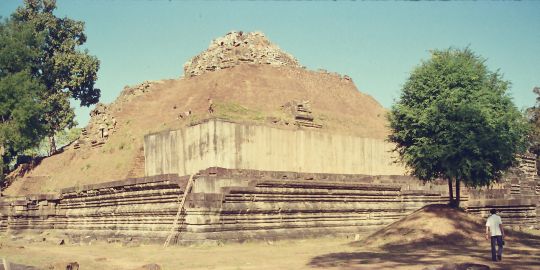
To what we see today:
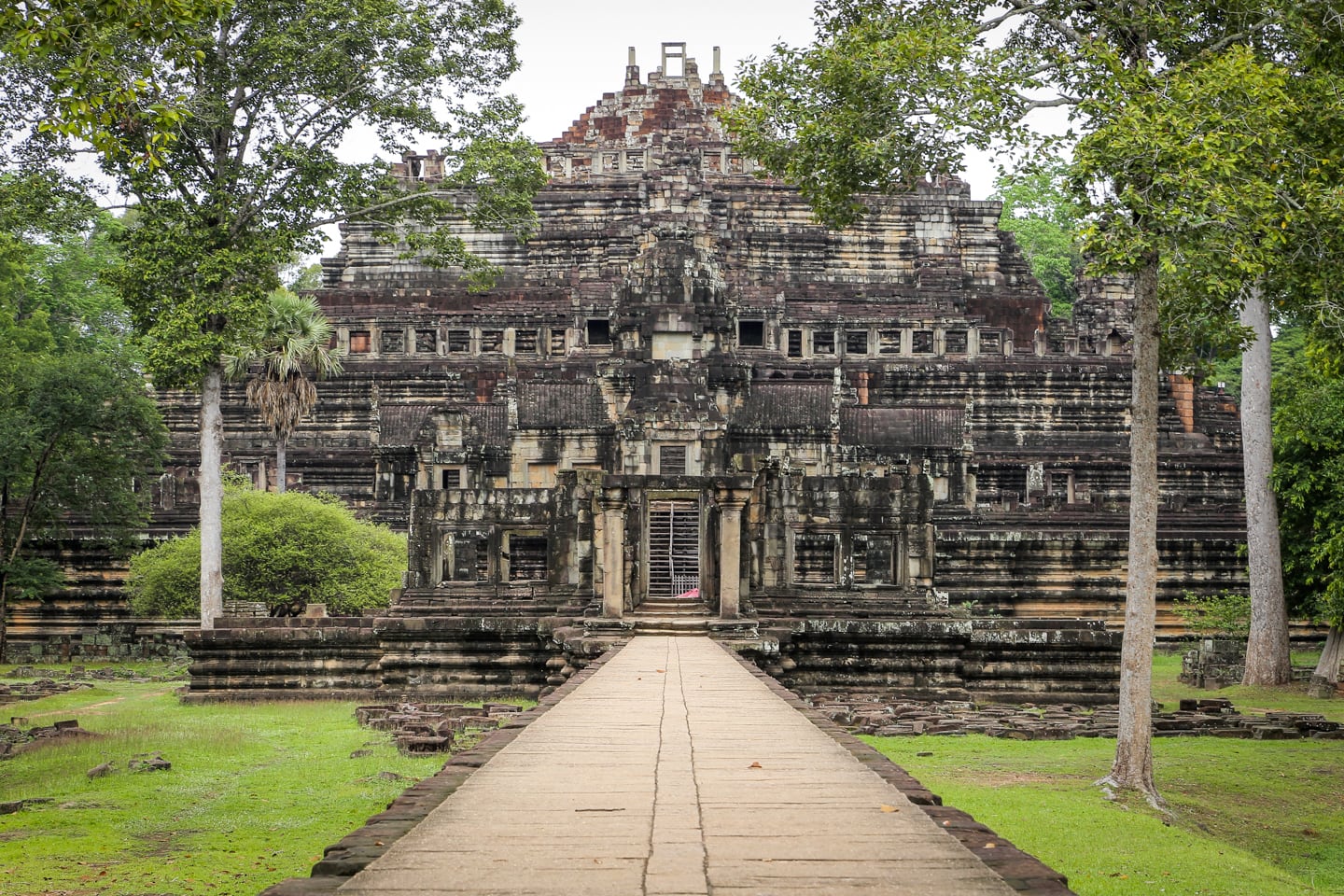
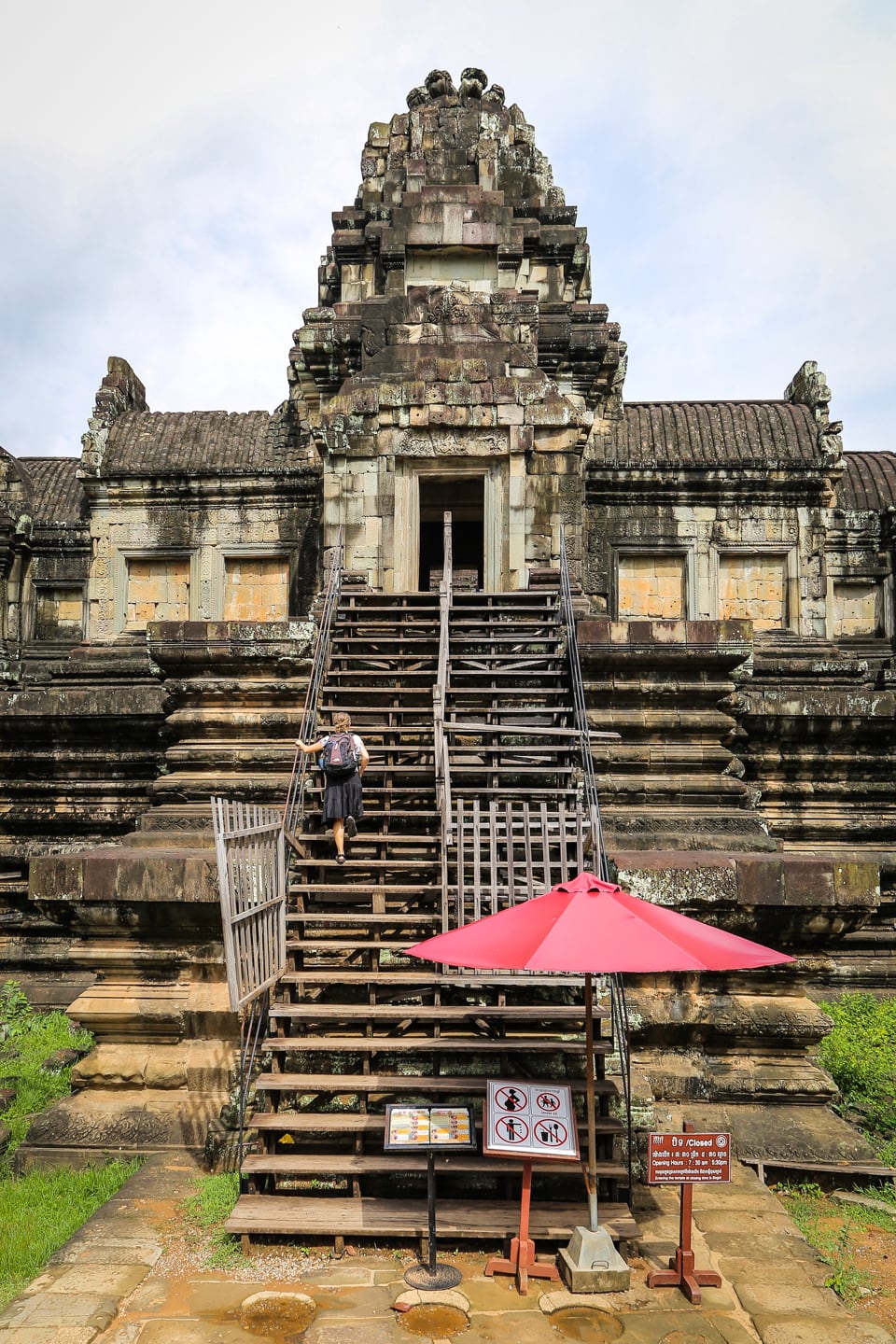
As young children aren’t permitted in the Baphuon, Lori and I took turns. Lori goes first this time, while I stay behind with the boys.
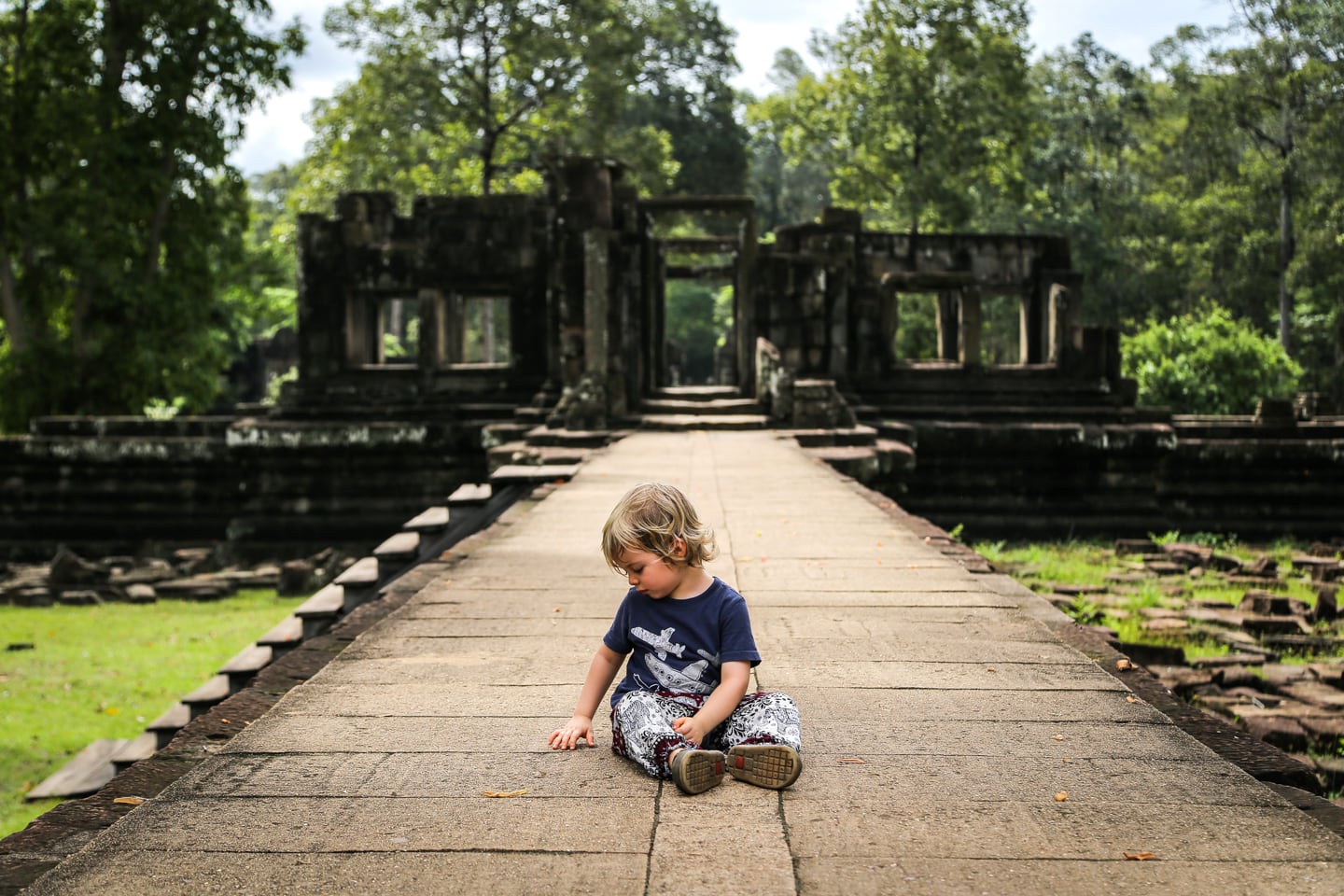
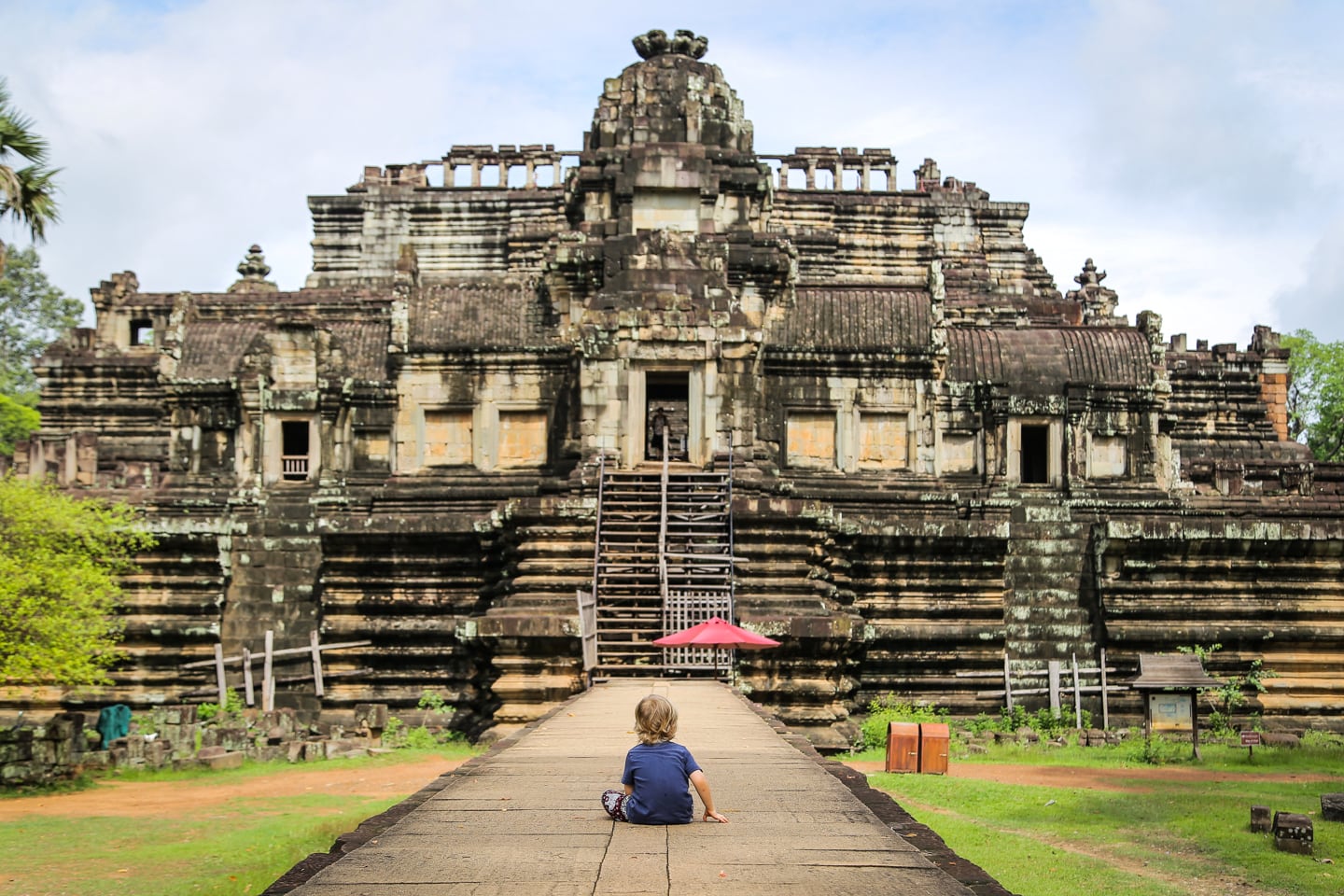
Then, it’s my turn.
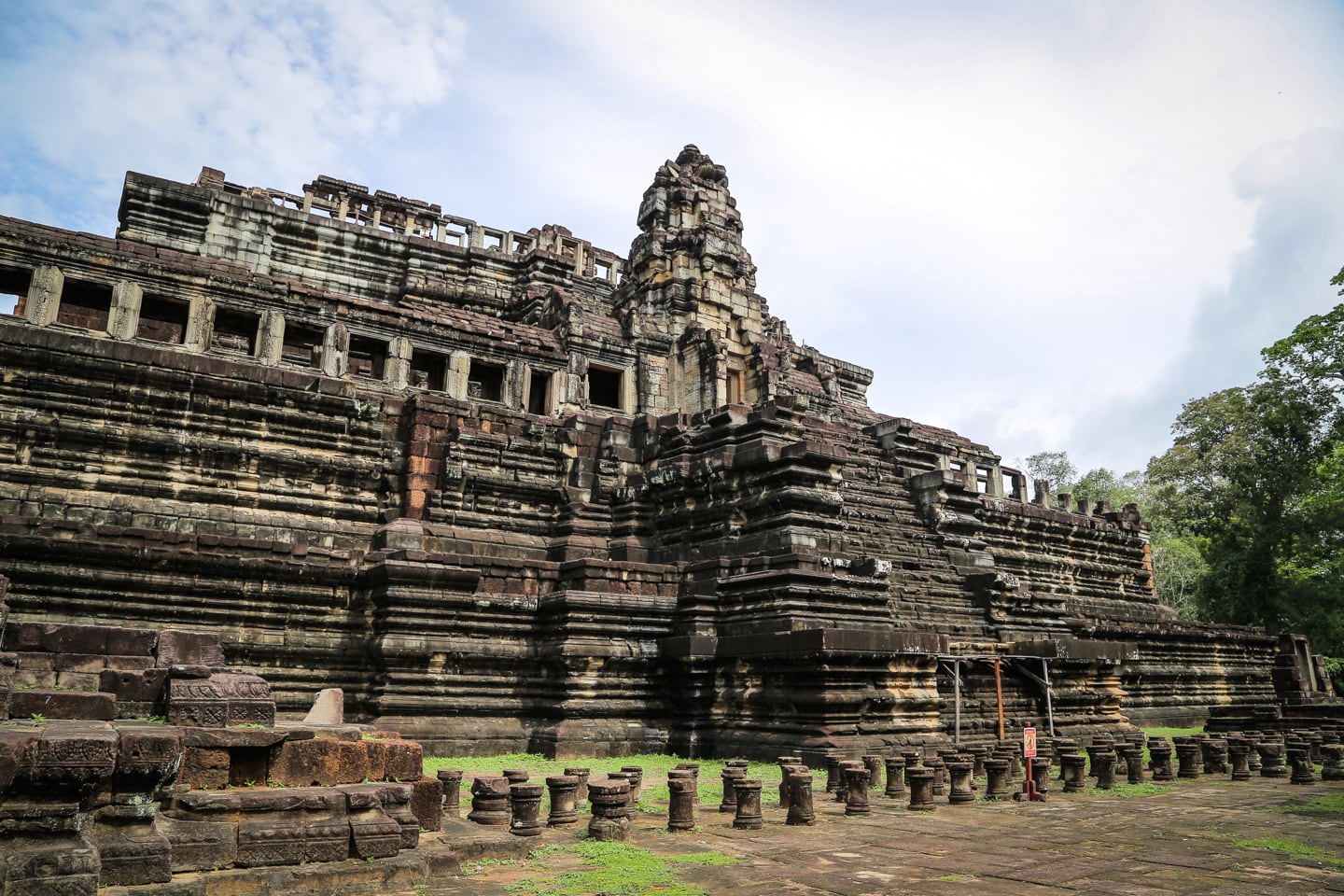
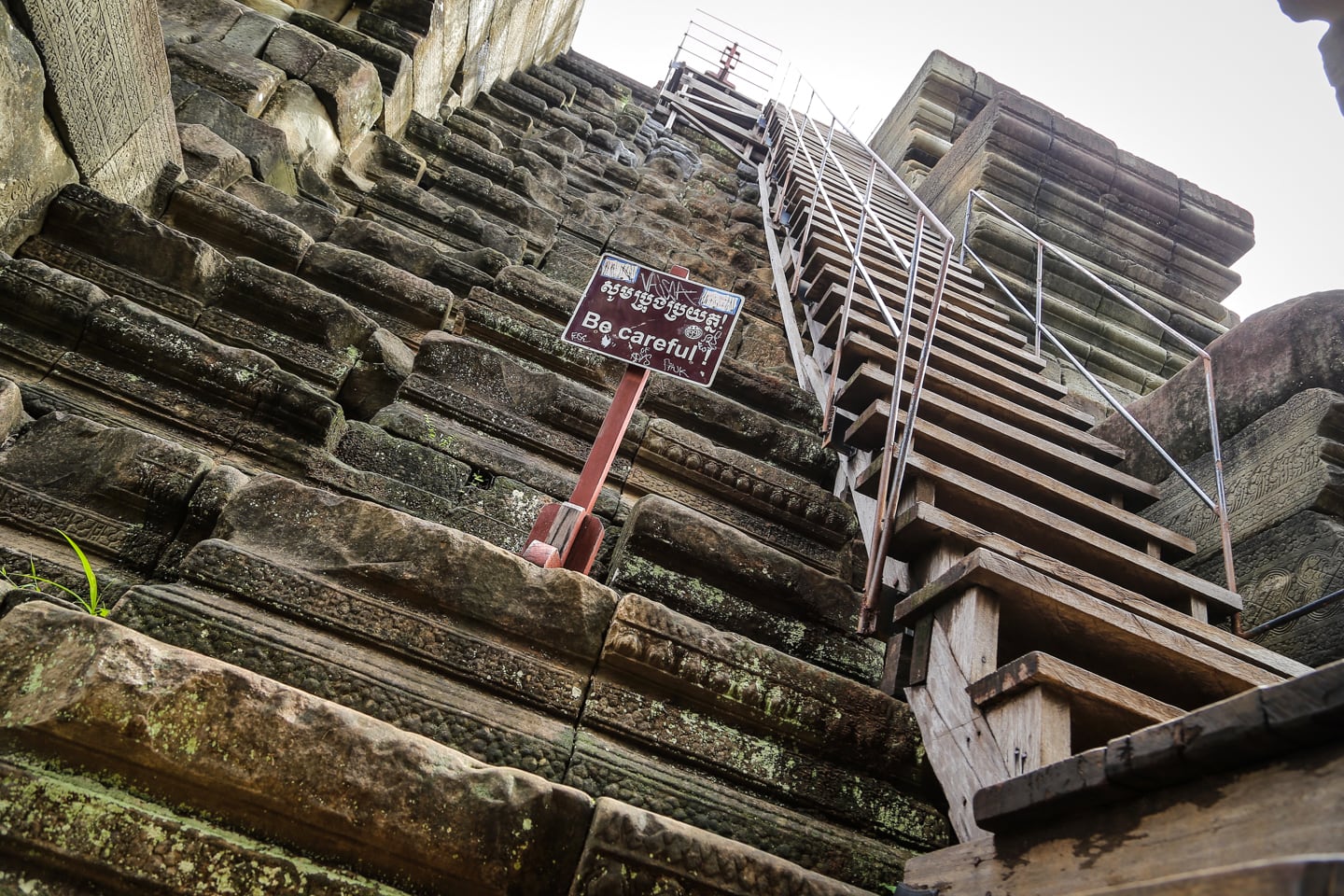
Lori hadn’t realized you could ascend to the top of the temple mountain. Somehow, she missed the near-vertical stairs, I guess.
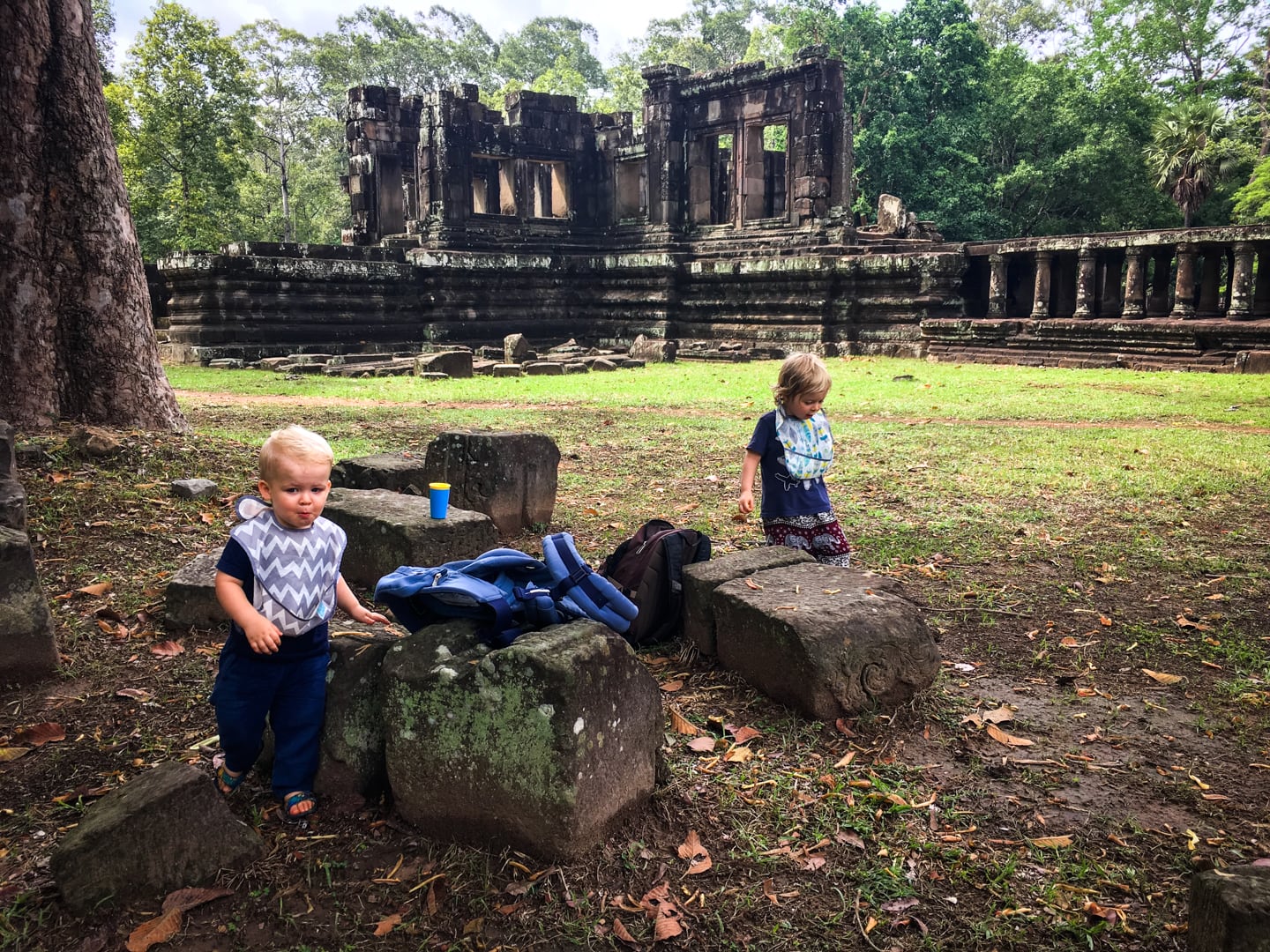
Meanwhile, snack time in the grove outside.
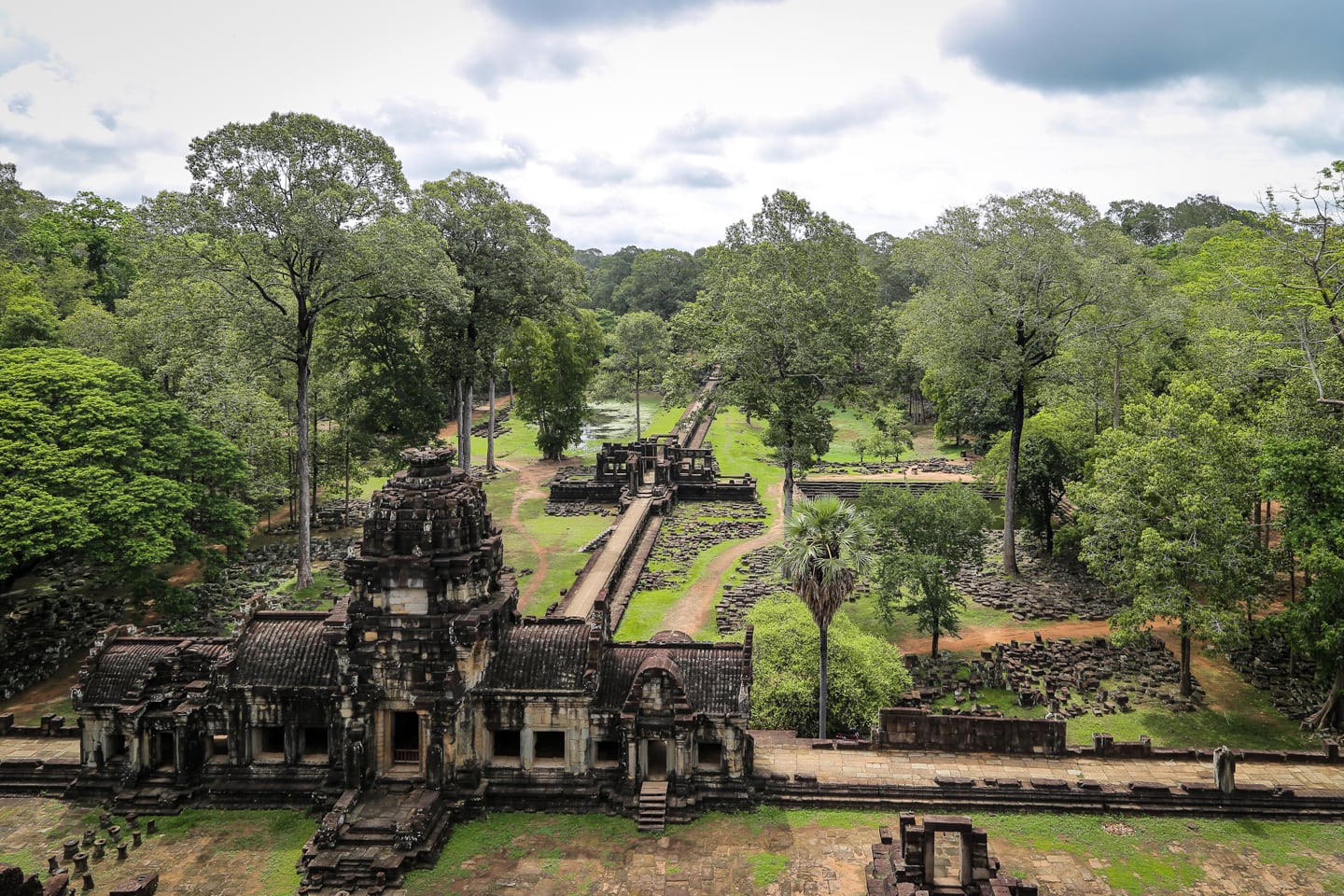
The view of the grounds, facing east.
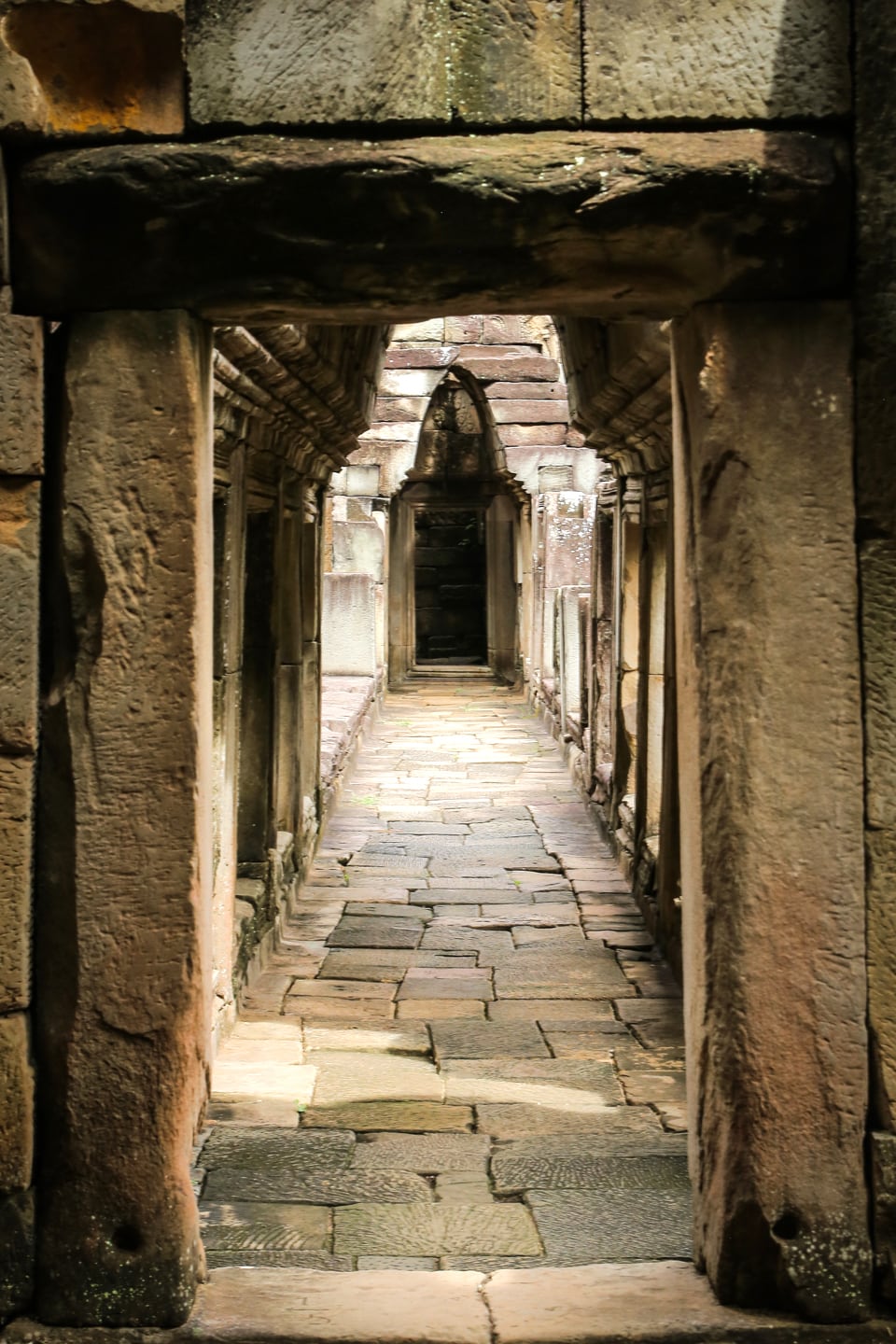
The halls of the temple.
The Baphuon isn’t the most visited temple in Angkor, but it does get more than its share of visitors on an average day. Here, in the time of Covid, we’ve got the entire structure and grounds completely to ourselves, save for a single, solitary park officer checking tickets.
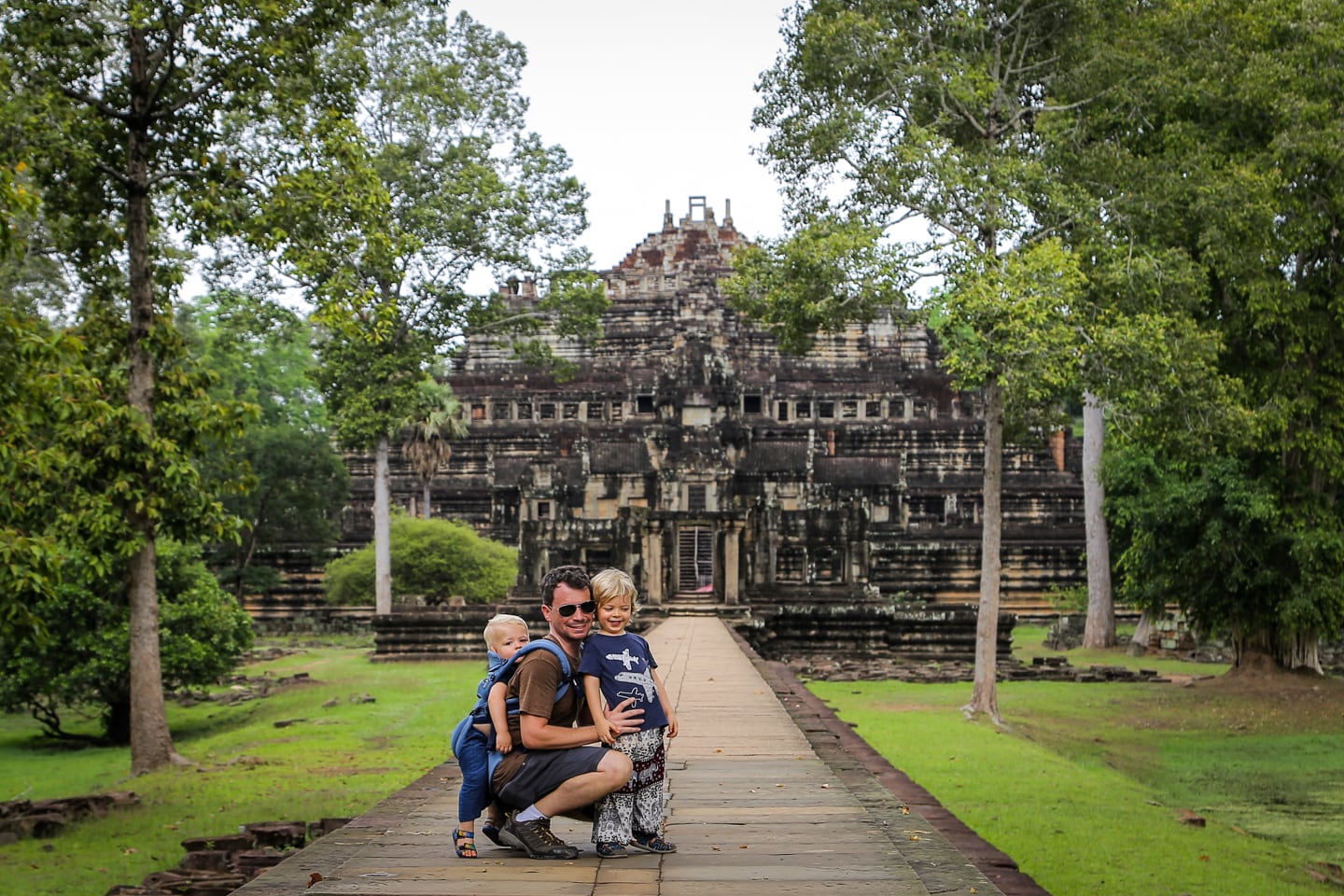
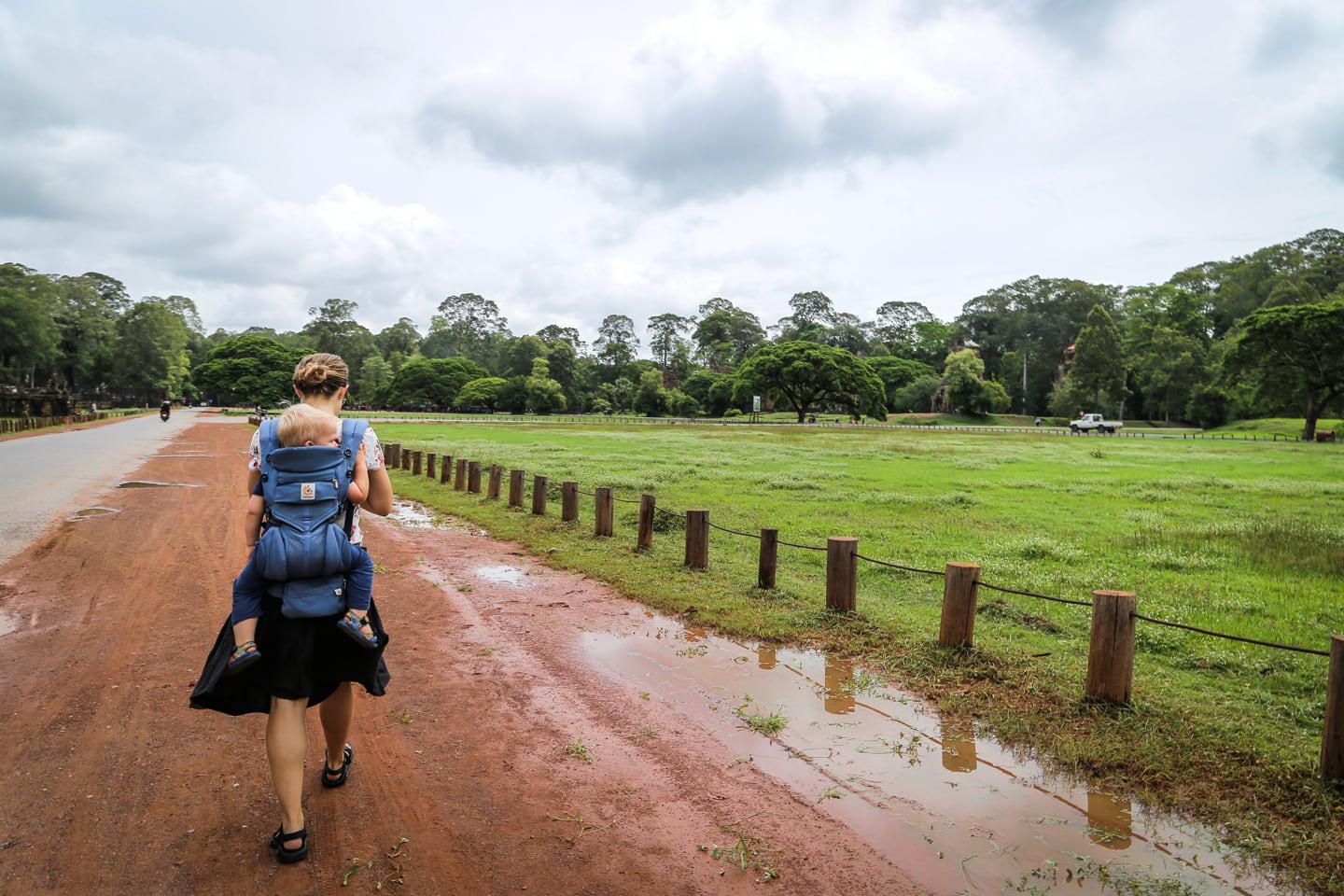
Exploring Angkor Thom on Foot
We leave the Baphuon to explore the dozens of minor temples and structures in the center of Angkor Thom.
One of our objectives for the day is to get the boys a couple of Angkor Wat t-shirts. At the north end of the Royal Square is a large market that appears largely deserted.
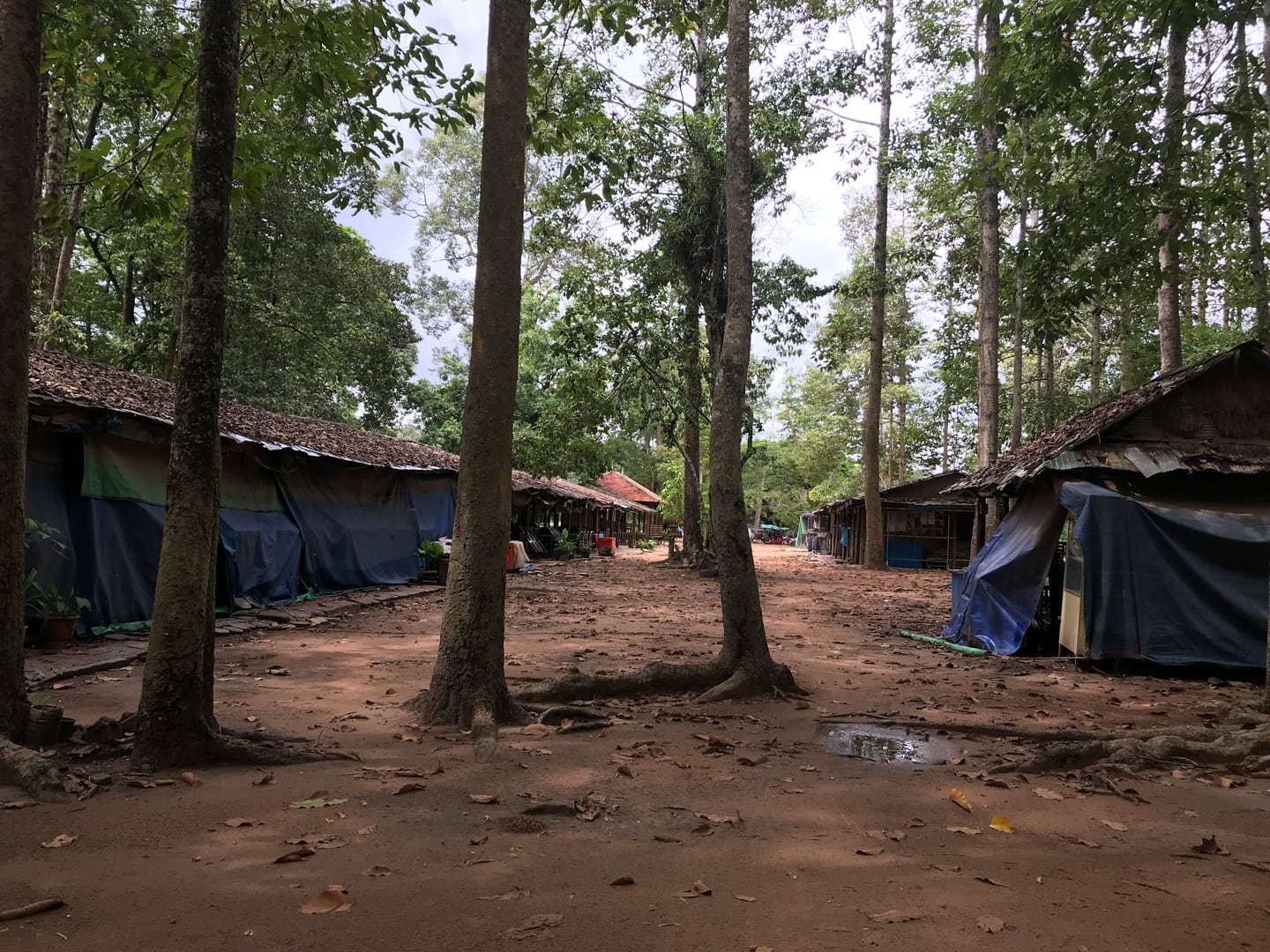
At the south end, we find one restaurant and two clothing shops in a functional state. It’s clear they don’t see a lot of visitors these days.
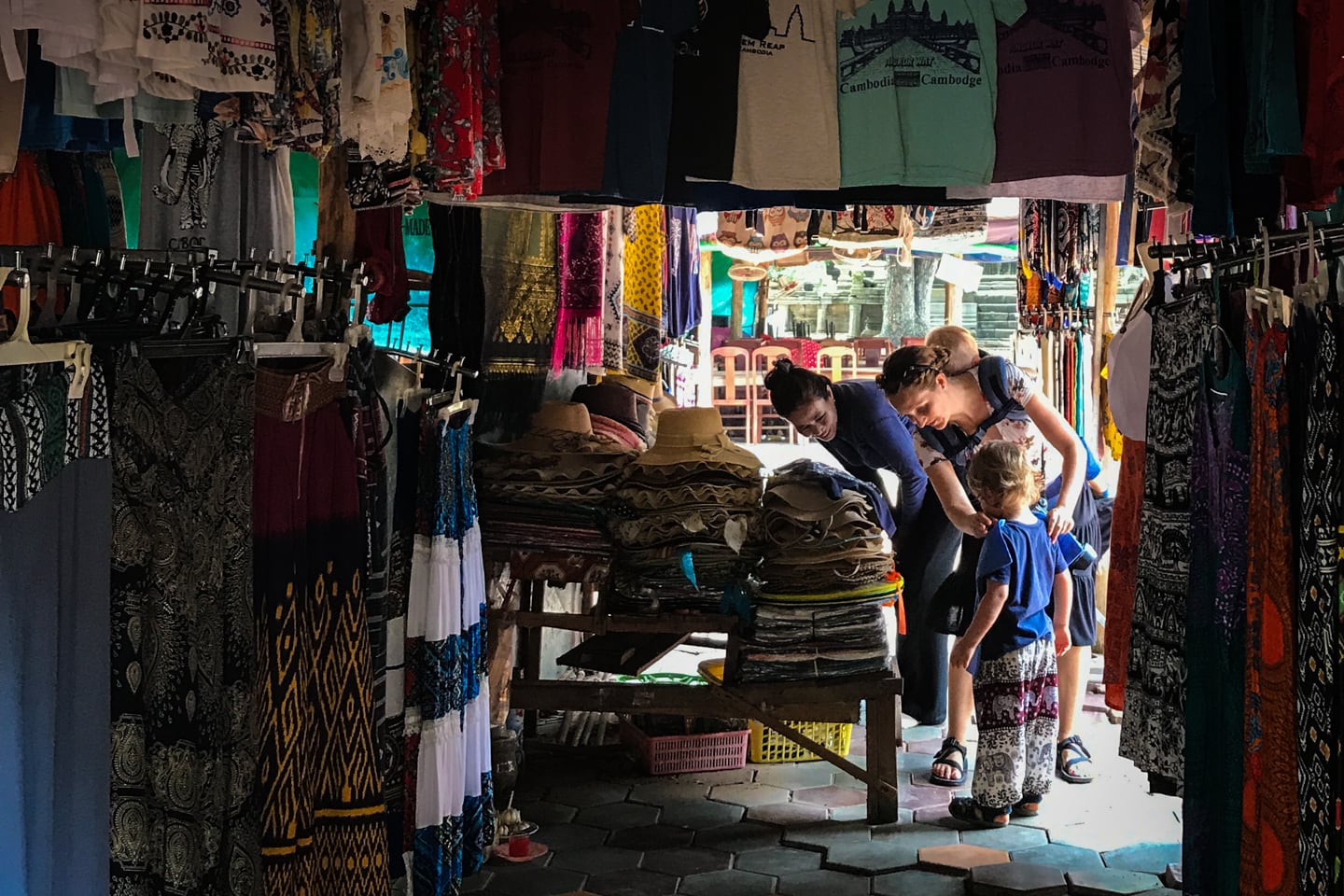
After successfully securing shirts for the boys, we head off to explore Prasat Krae Preah and Preah Pithu.
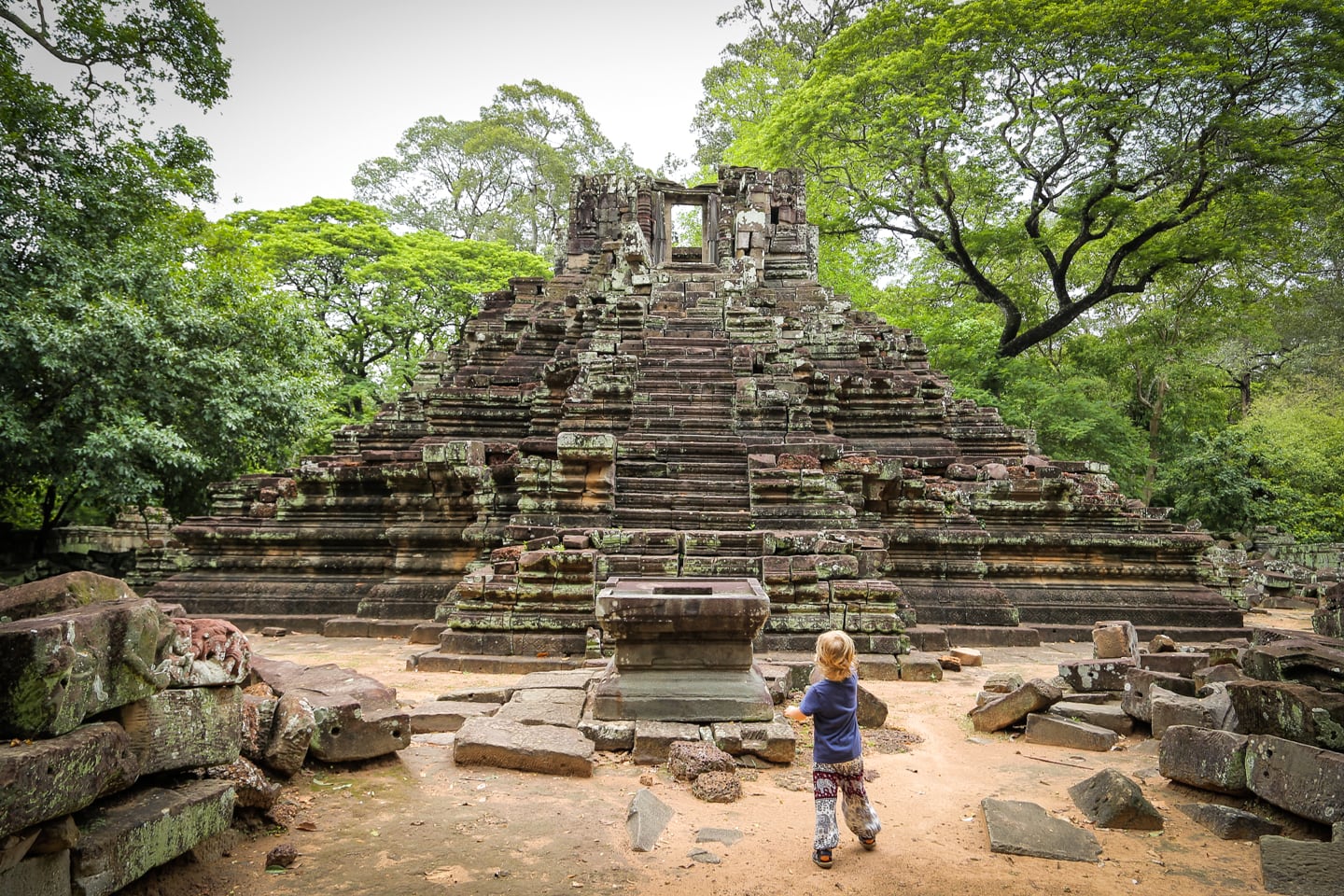
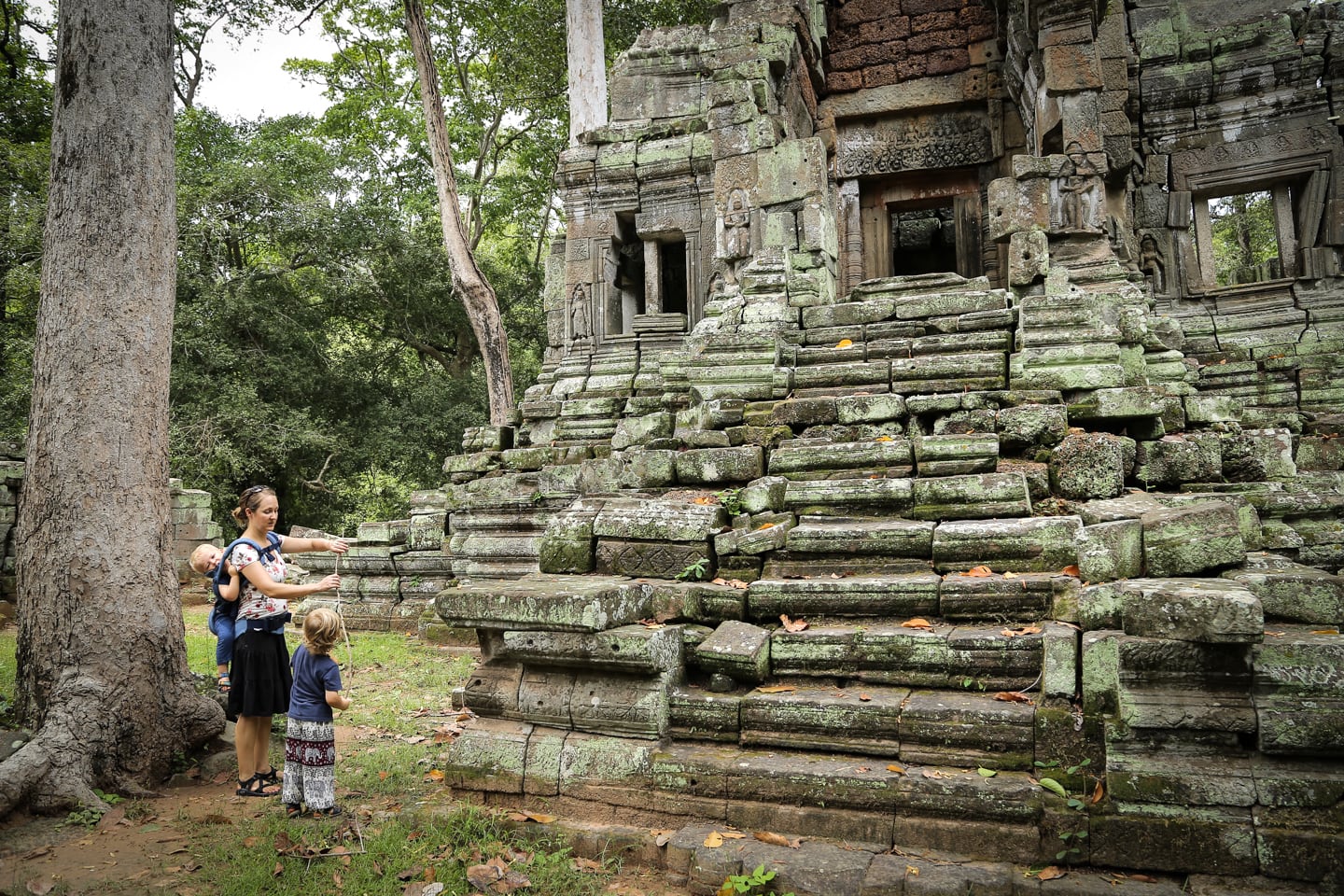
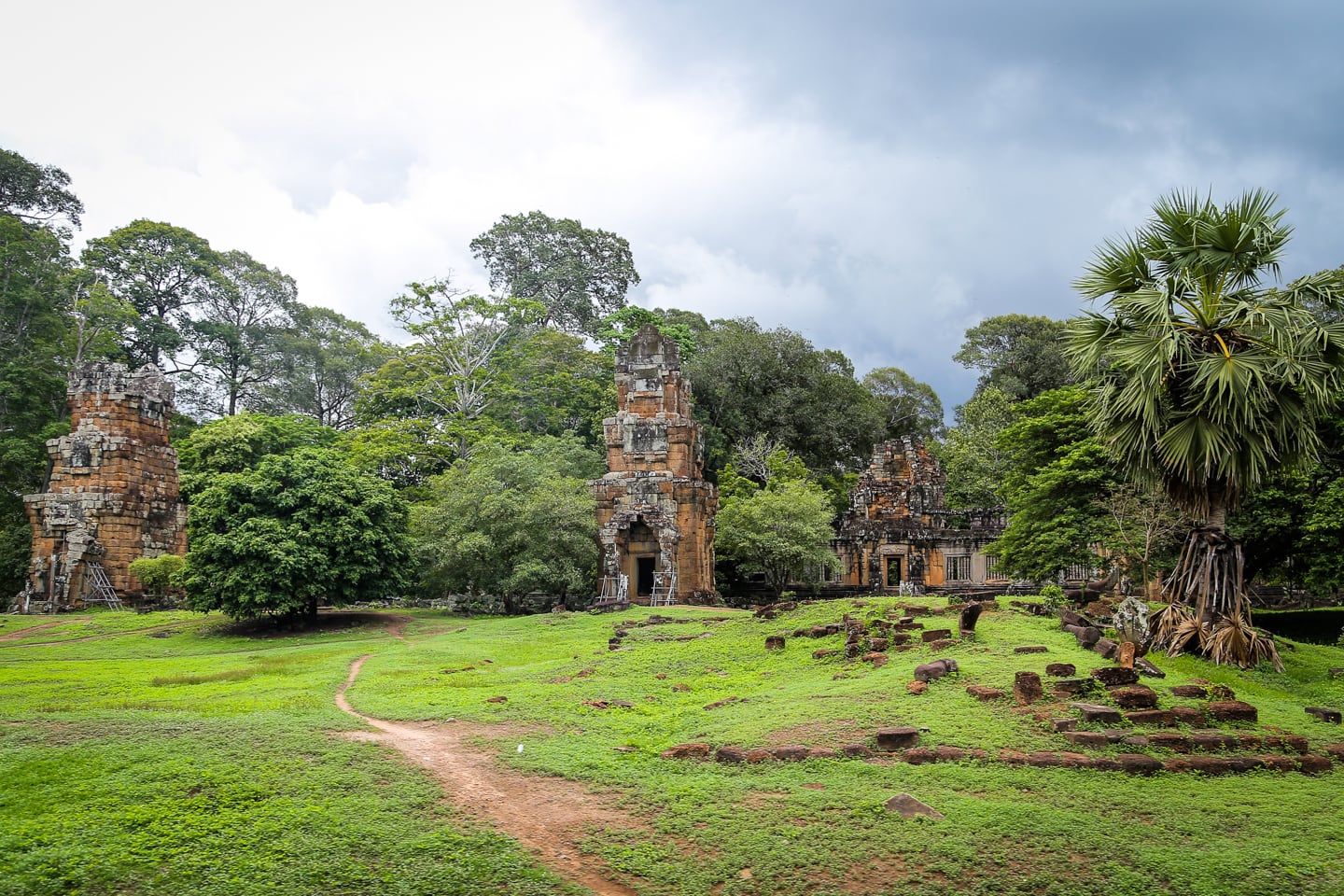
Passing the ghostly Twelve Towers (Prasats Suor Prat).
Arriving at the contemporary Buddhist temple of Wat Preah Ang Sang Tuk, we’ve decided we’ve seen everything we want to see at Wat Thom. With an hour left to explore, we hail a remorque and ride on up to Preah Khan.
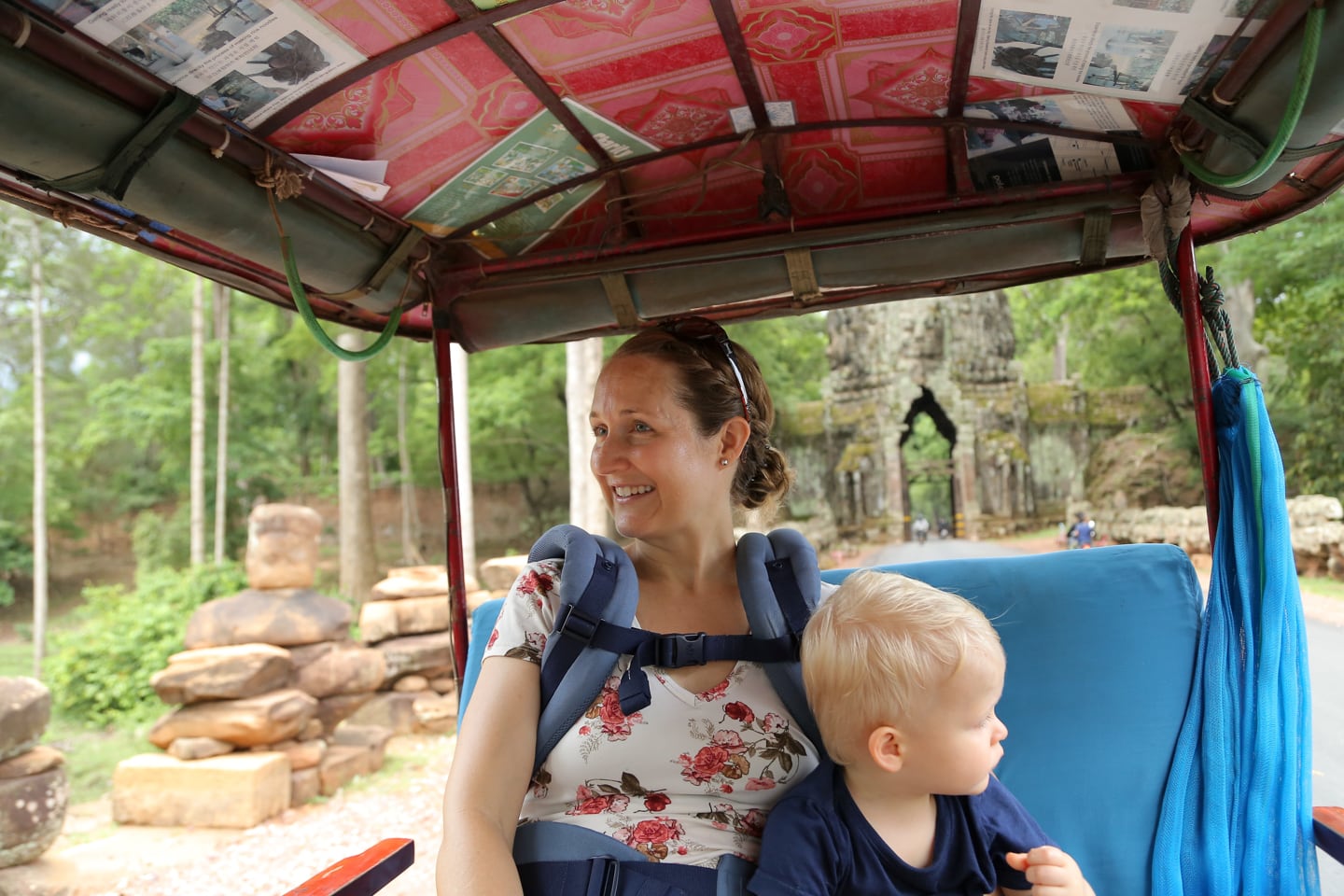
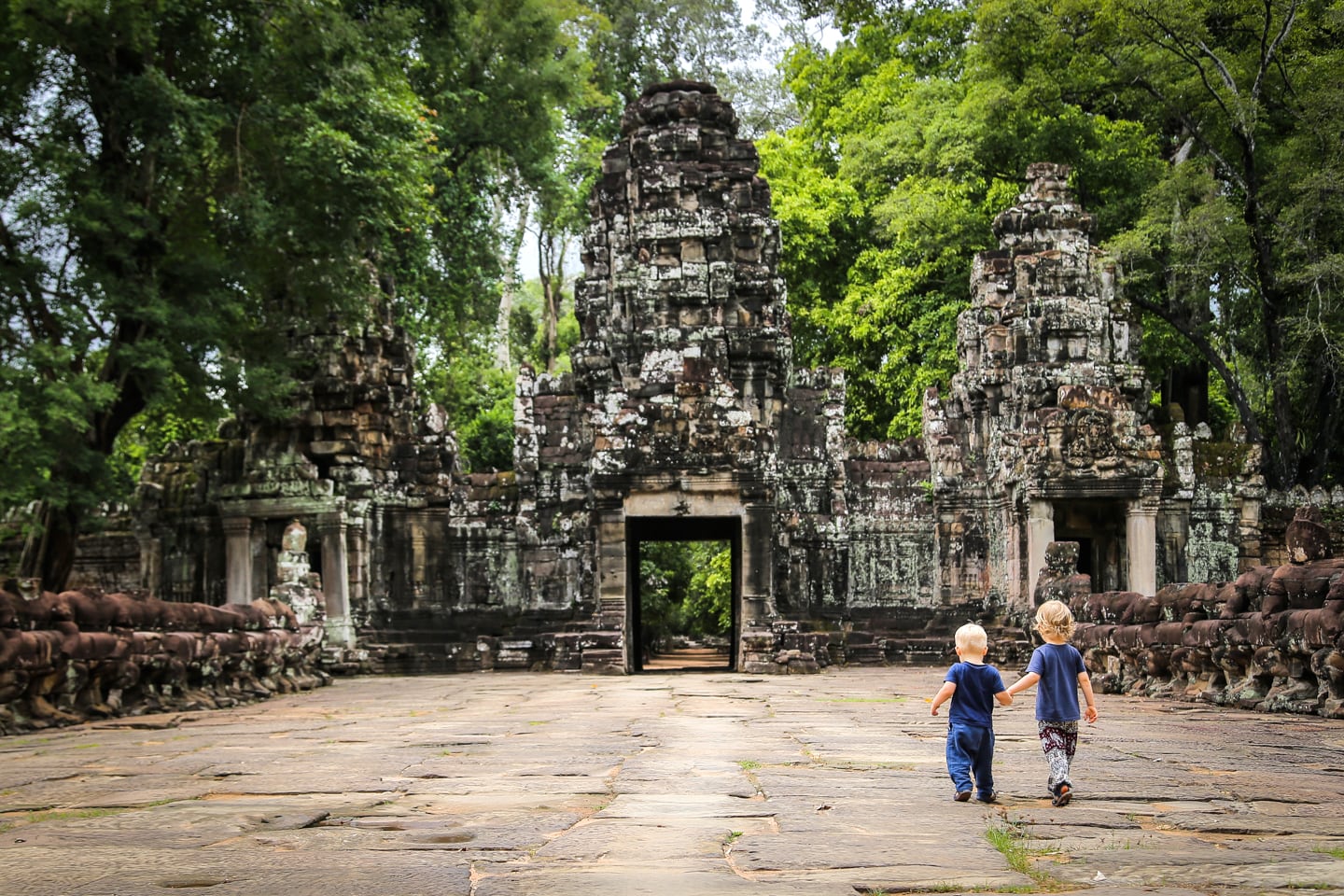
The Peaceful Jungle Temple of Preah Khan
The story of Preah Khan isn’t nearly as interesting as the Baphuon. Regardless, it’s a very worthwhile temple to visit.
Like Angkor Wat and Angkor Thom, Preah Khan sits on a manmade island formed by a moat (canals) around the entire perimeter of the temple. Visitors cross ornate stone bridges (above) to access the temple.
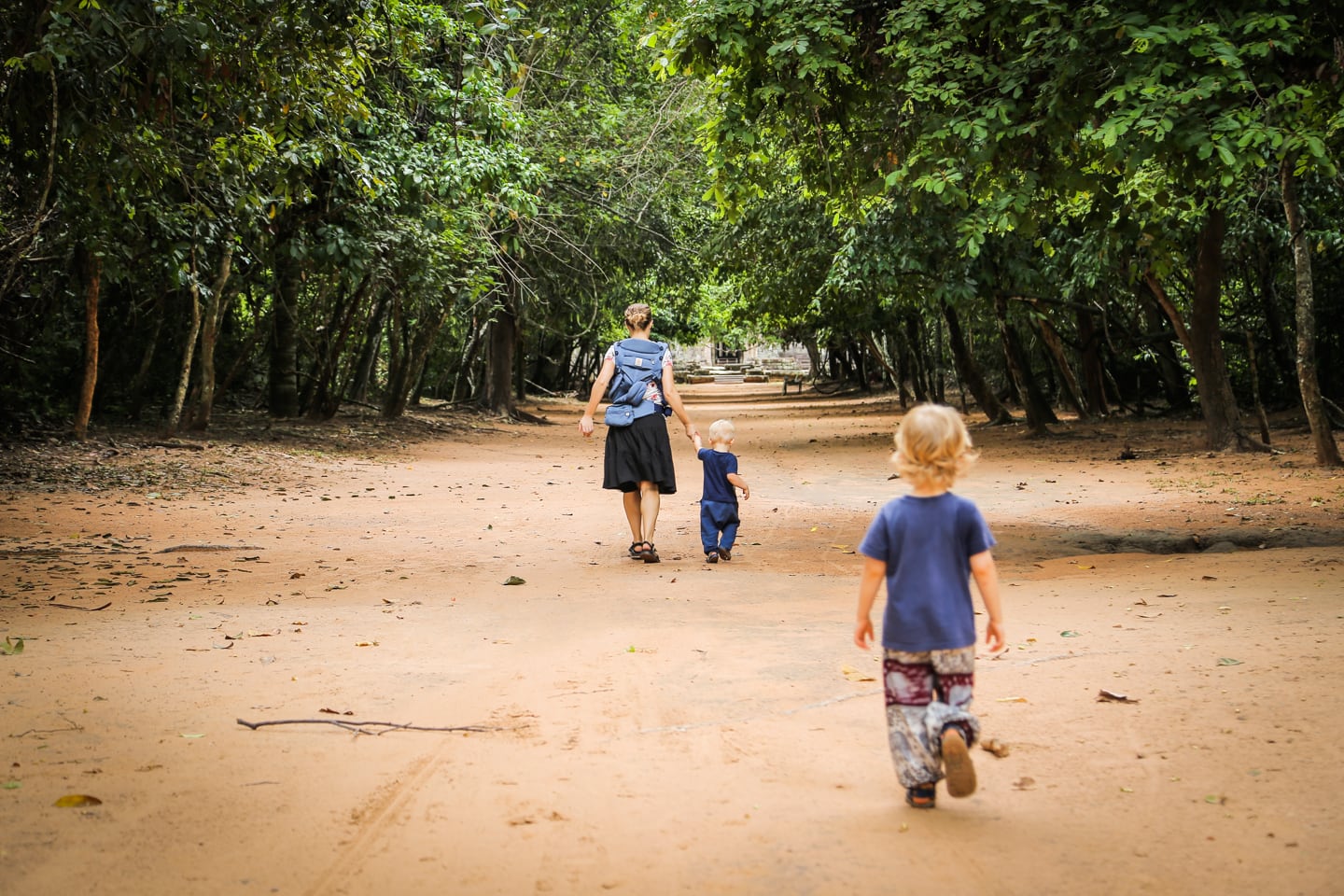
It’s a peaceful 5-10 minute walk after crossing the moat to arriving at the temple grounds. The dirt path cuts through dense jungle, offering welcome shade from the midday sun.
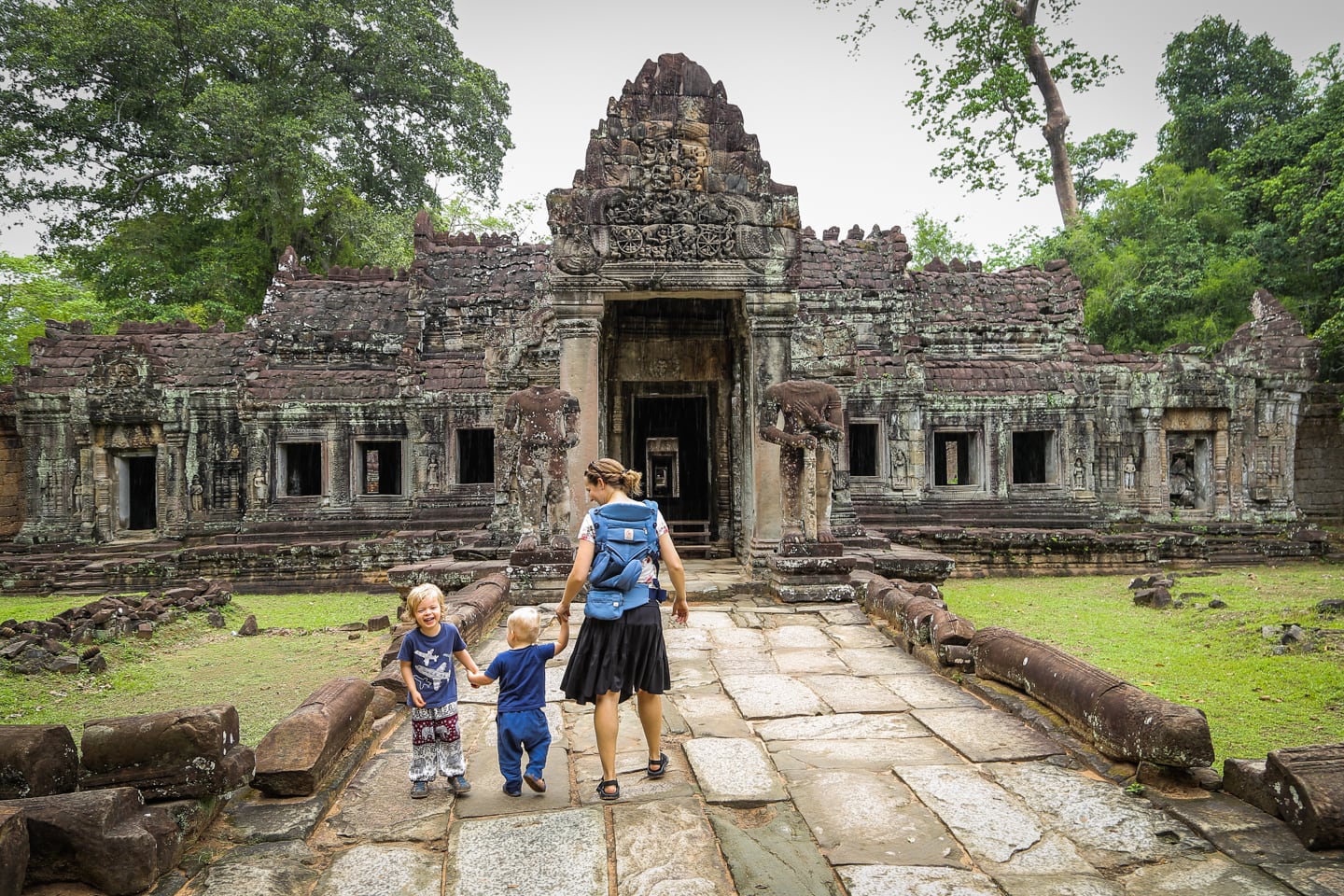
As we arrive at the main temple entrance, it begins to rain. Not a huge surprise in Cambodia in June.
Fortunately for us, the interior corridors of this temple are covered.
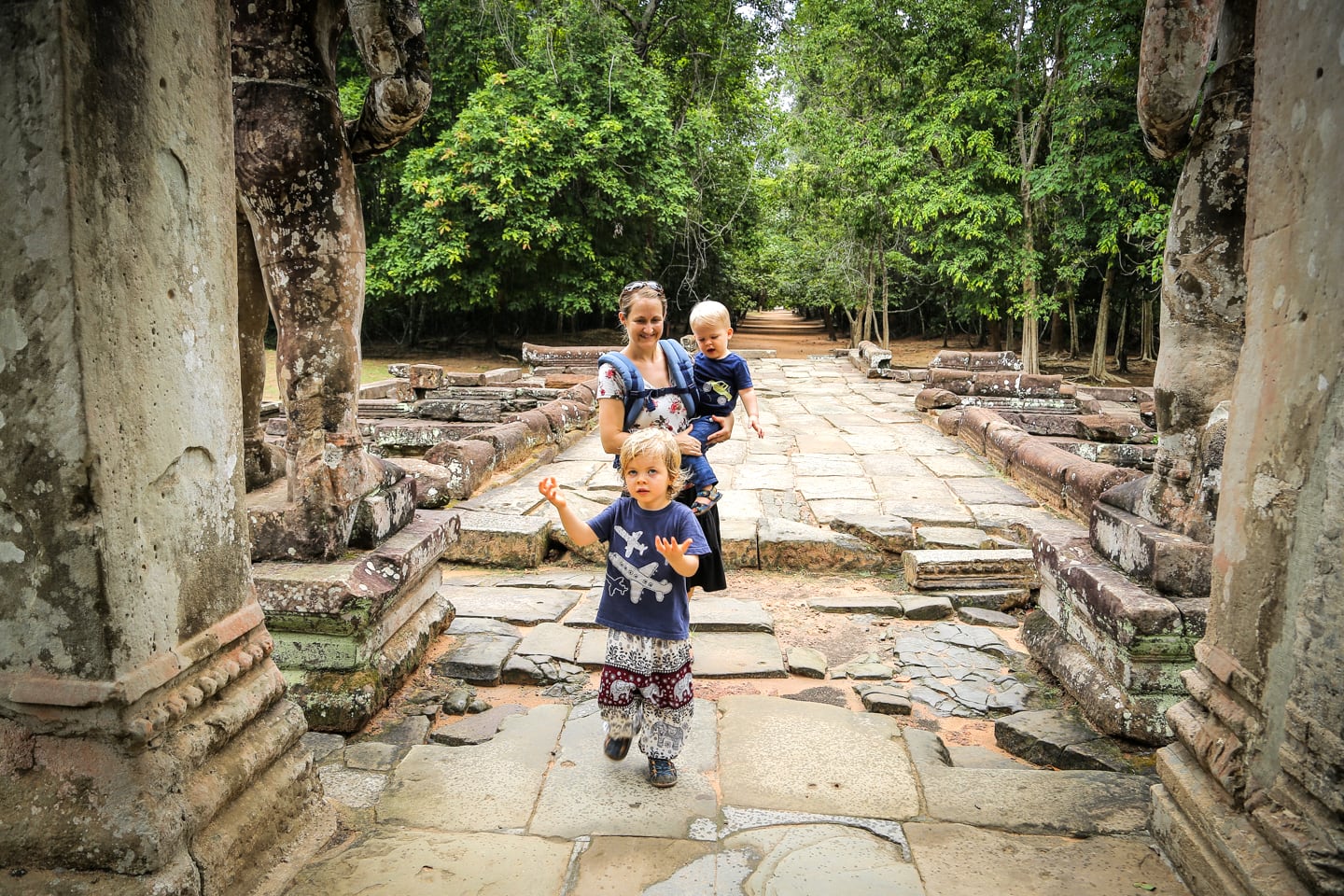
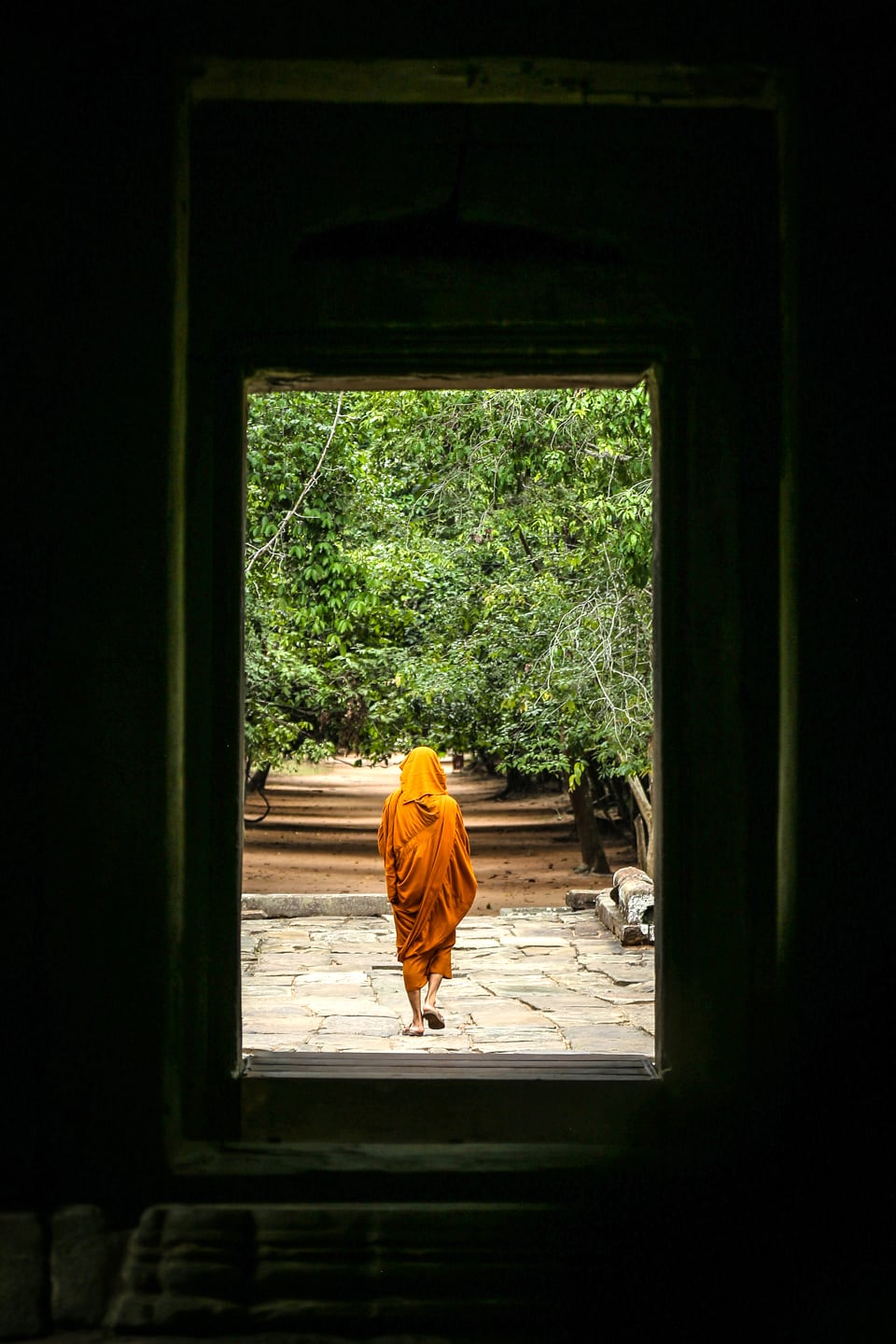
Preah Khan translates to “Royal Sword” or “Holy Sword”. The temple was built in the 12th century and served as the headquarters for 100,000 officials and servants. The grounds functioned as city, temple, and university, all in one.
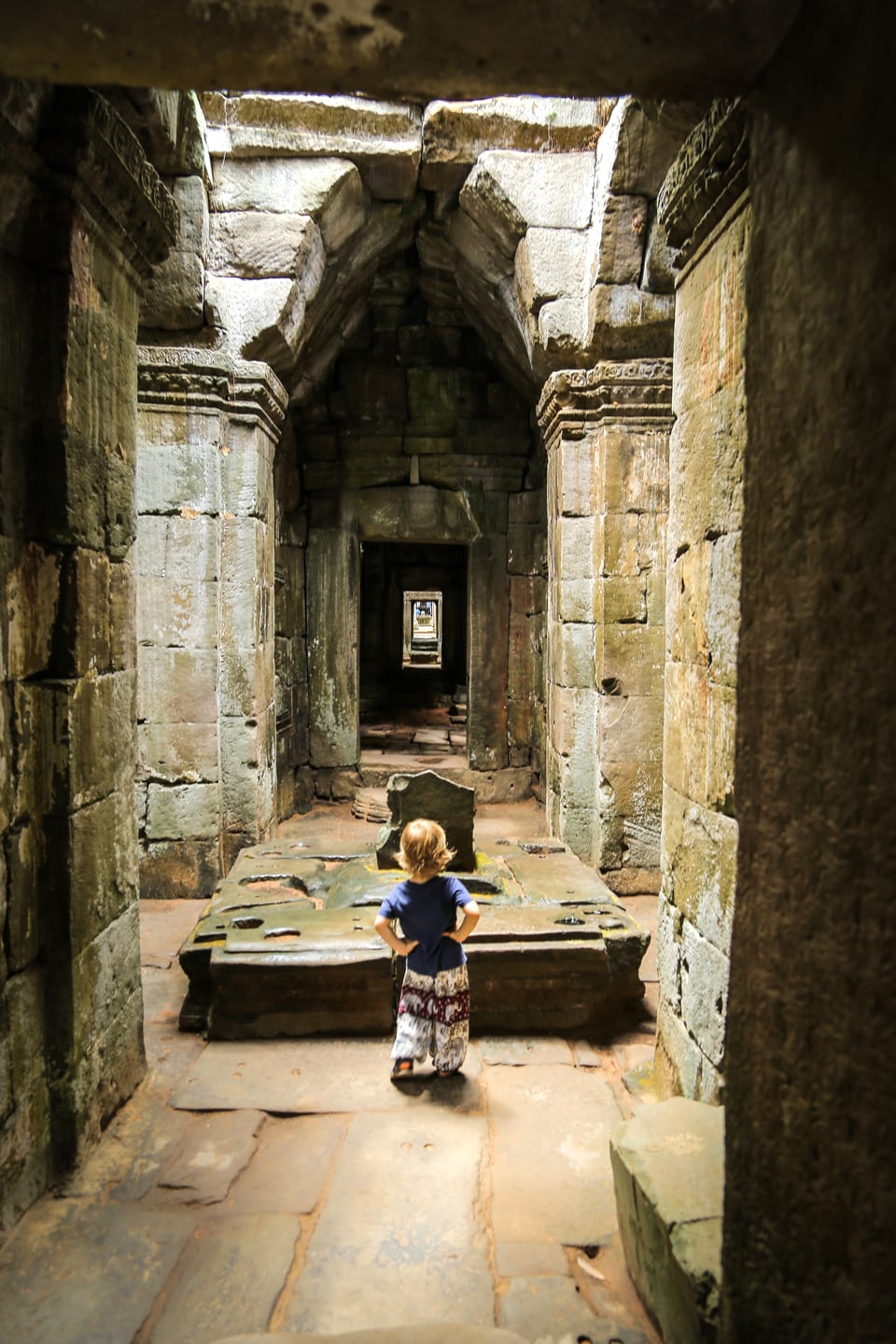
Preah Khan has not been restored to anywhere near the level of the Baphuon or other important structures around Angkor Archeological Park. Officials have taken a similar stance to Ta Prohm with regards to restoration, with a focus on preservation and stabilization.
When Preah Khan was rediscovered by archeologists in the 20th century, it had been completely overtaken by the surrounding jungle. In the years since, efforts have focused primarily on removing the destructive vegetation and preserving what is left.
Even in the absence of large-scale restoration, Preah Khan is still an impressive structure to explore.
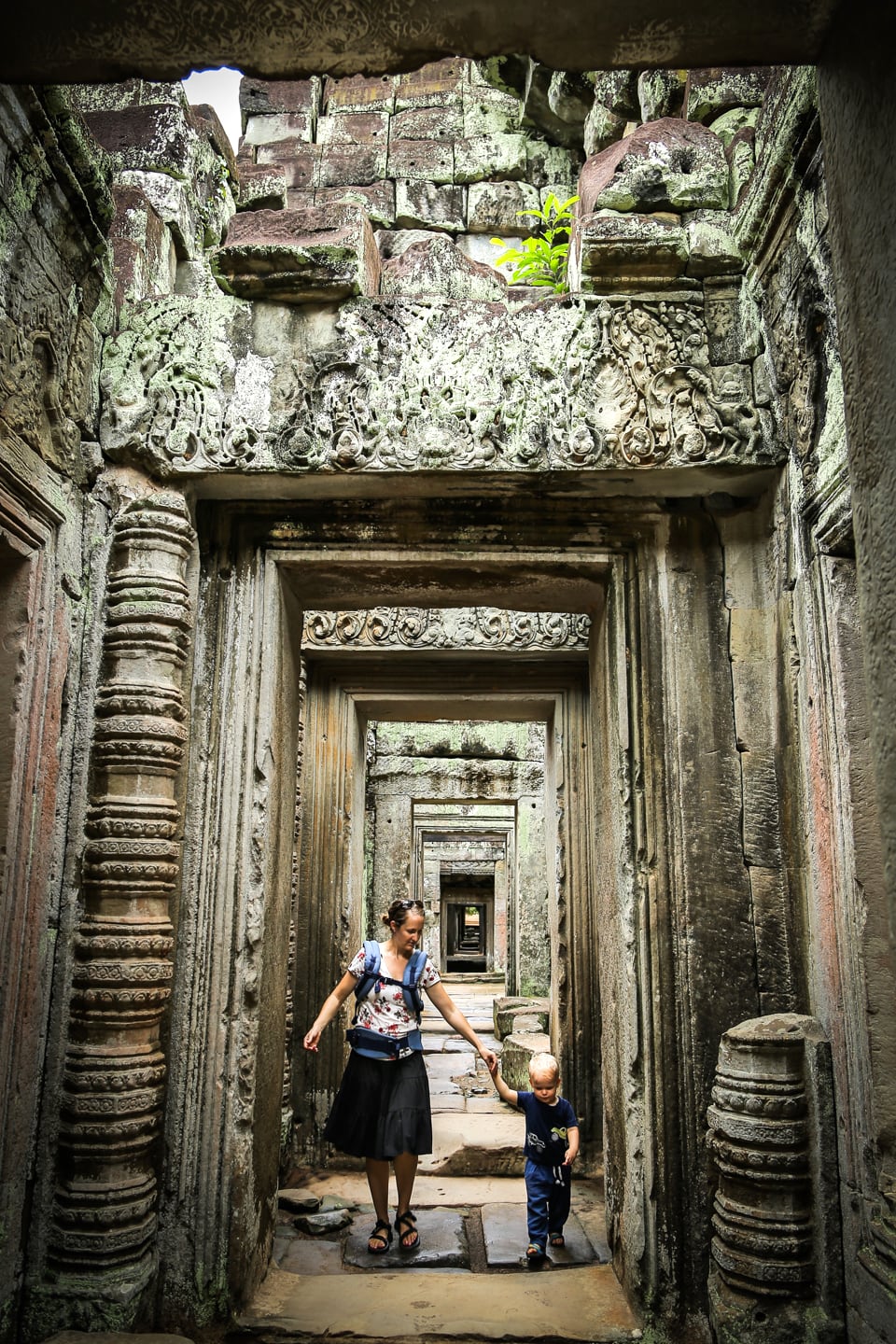
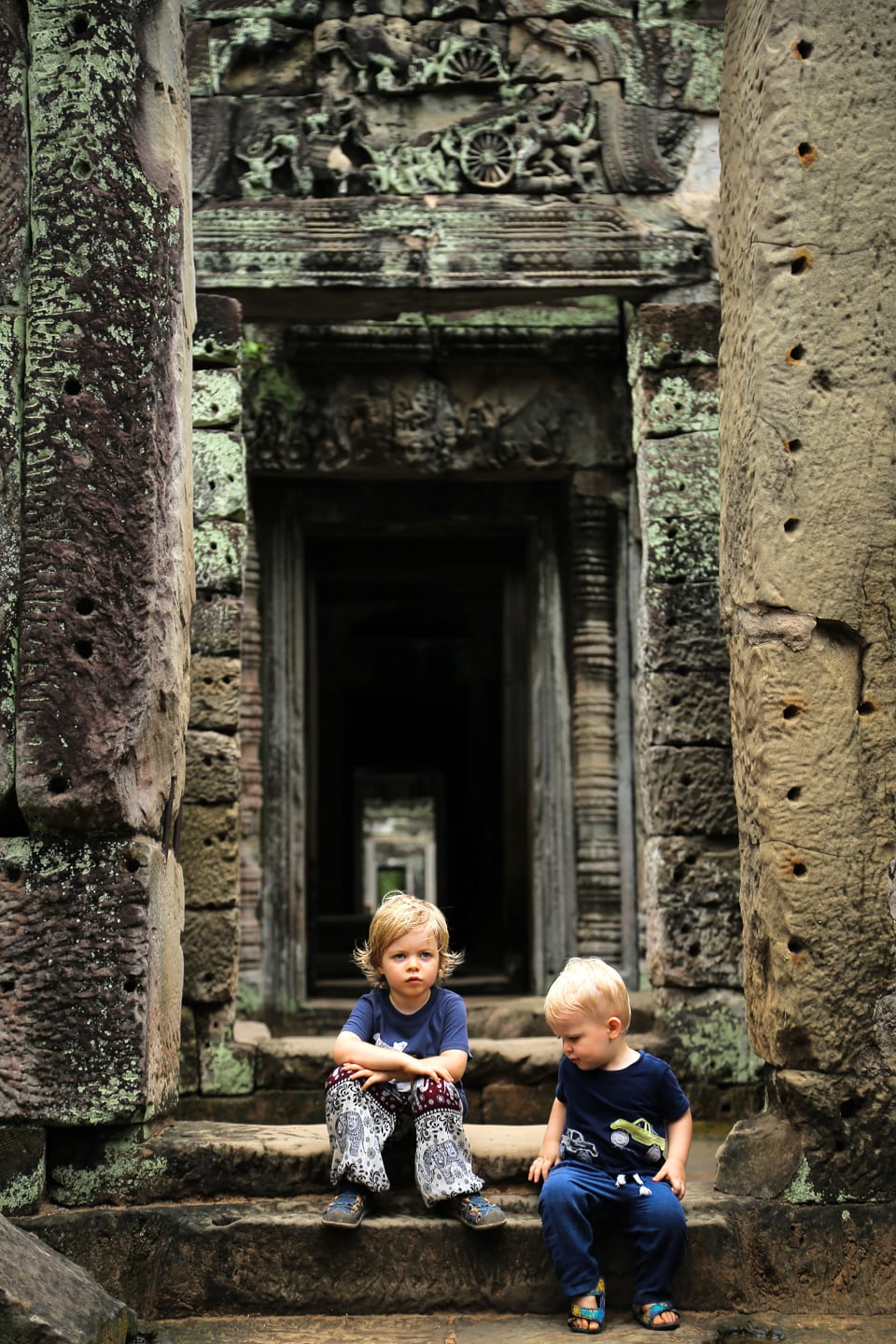
Suffice it to say that Noe was none too pleased to be sharing his photo op. with his baby bro.
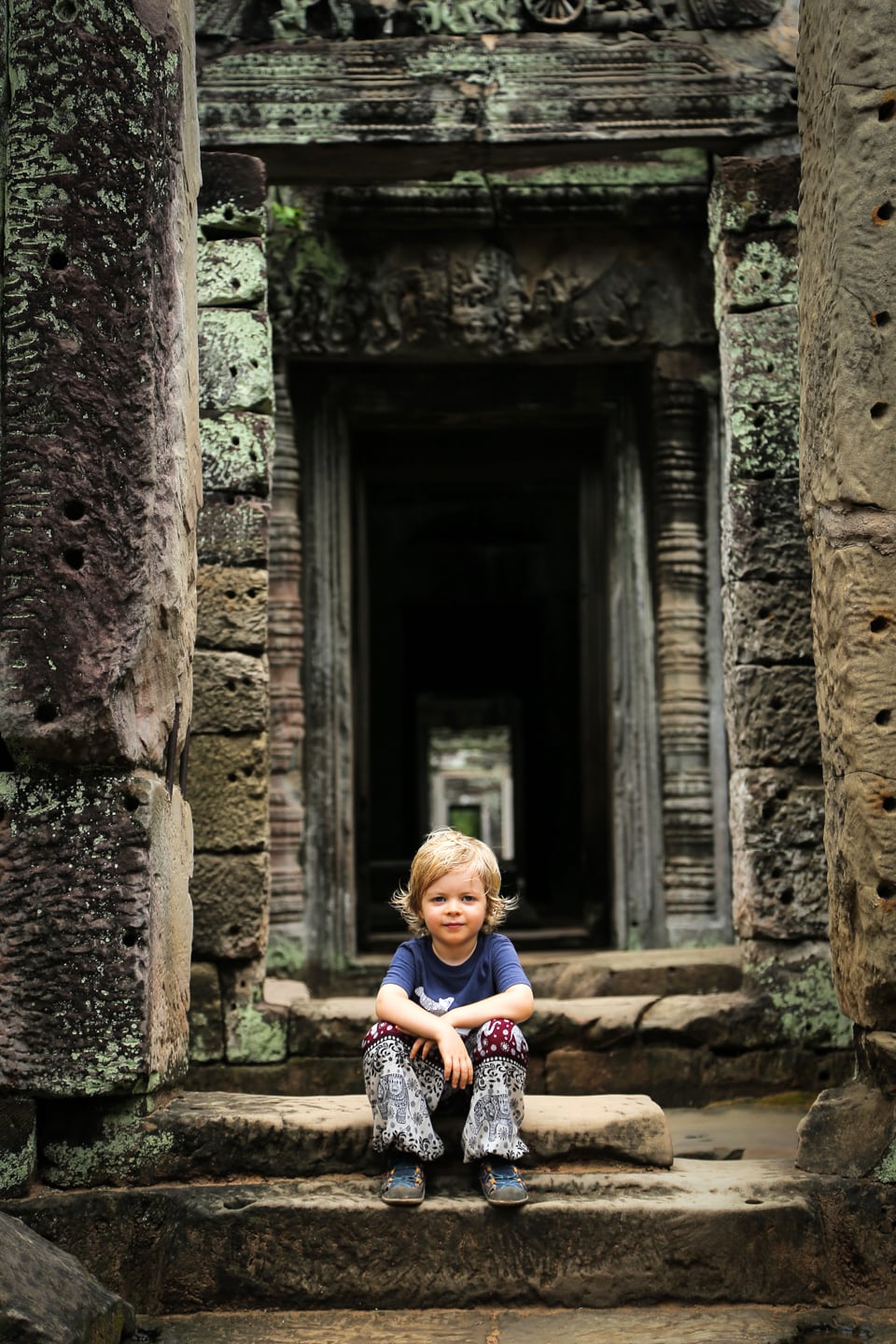
That’s more like it.
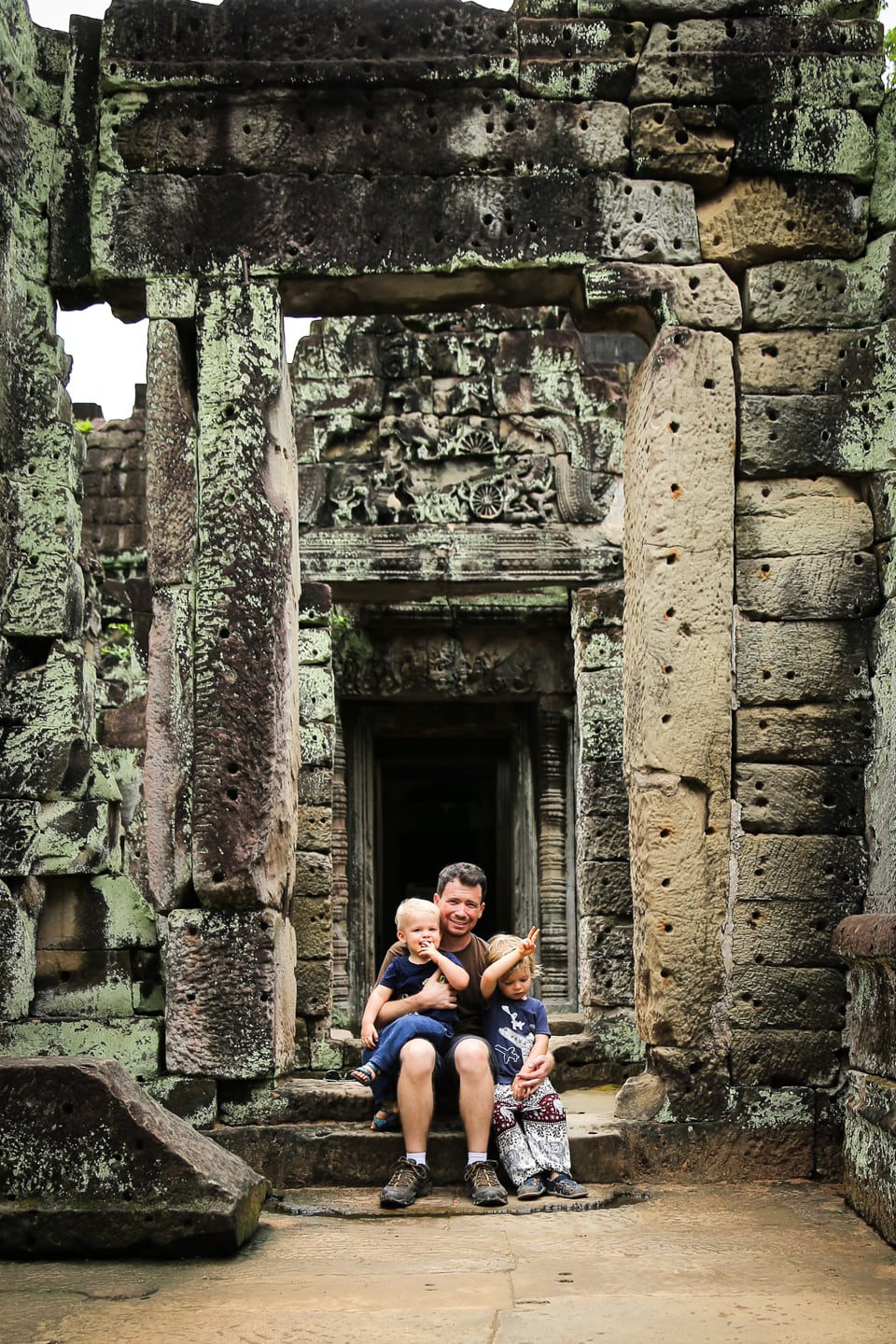
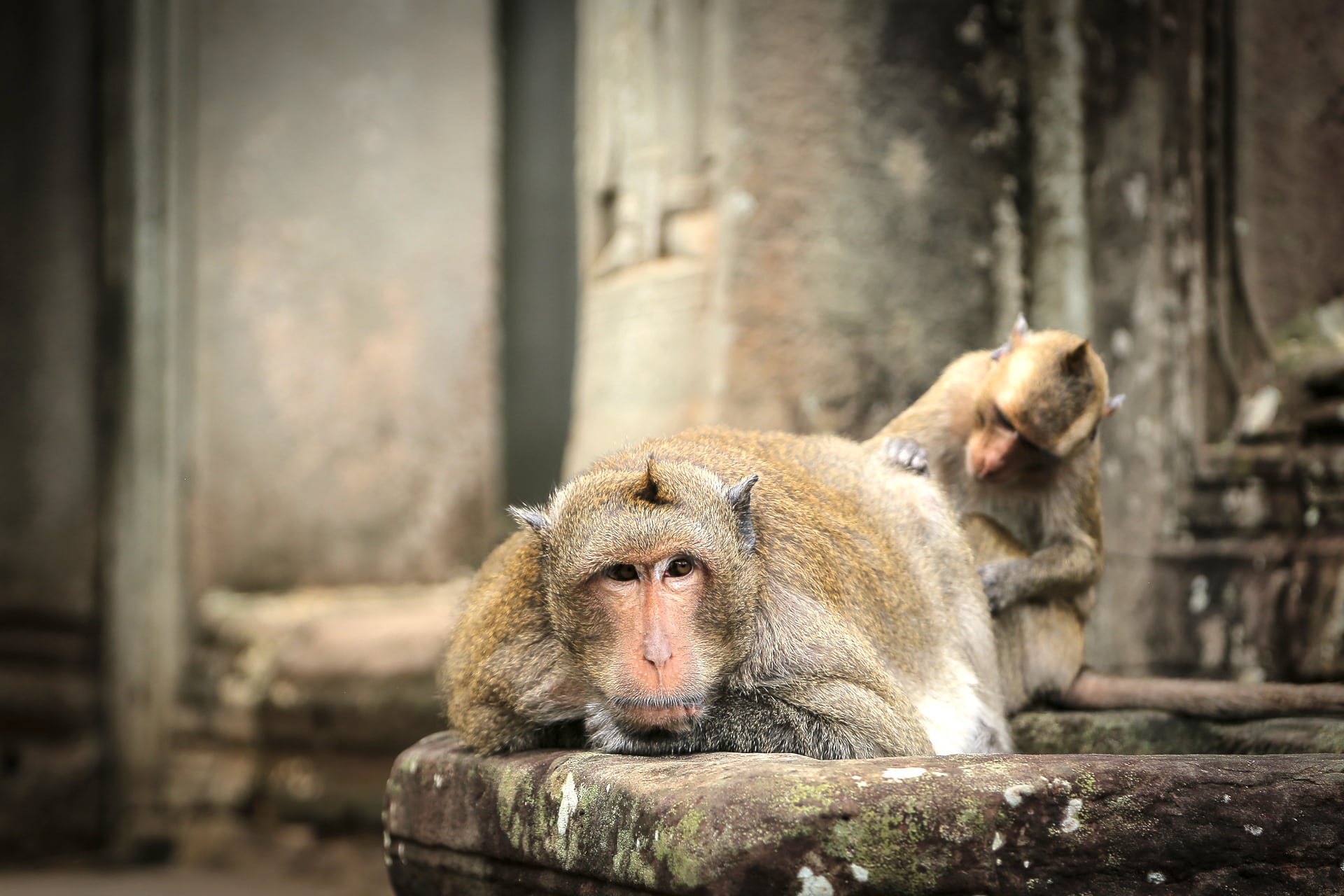
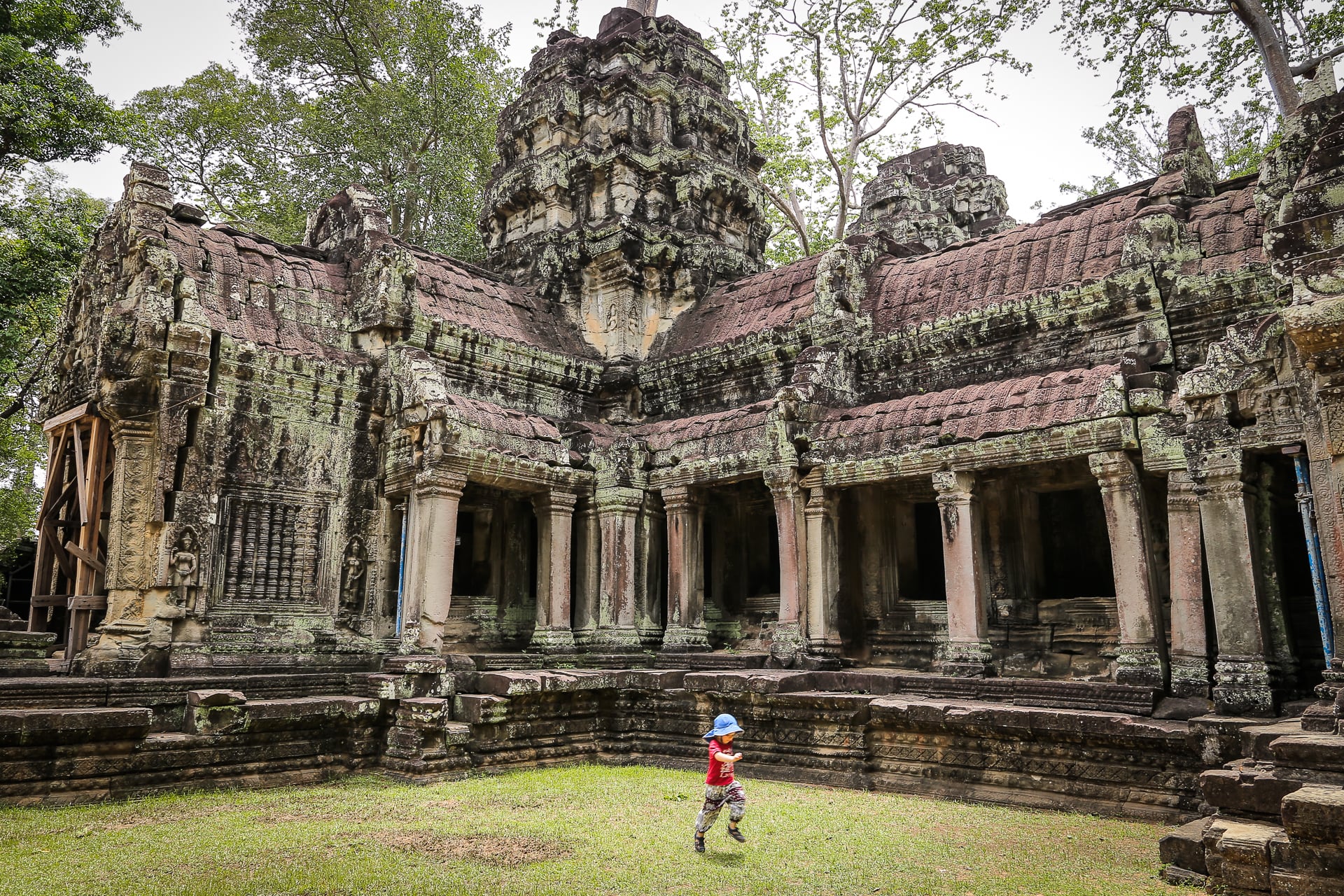
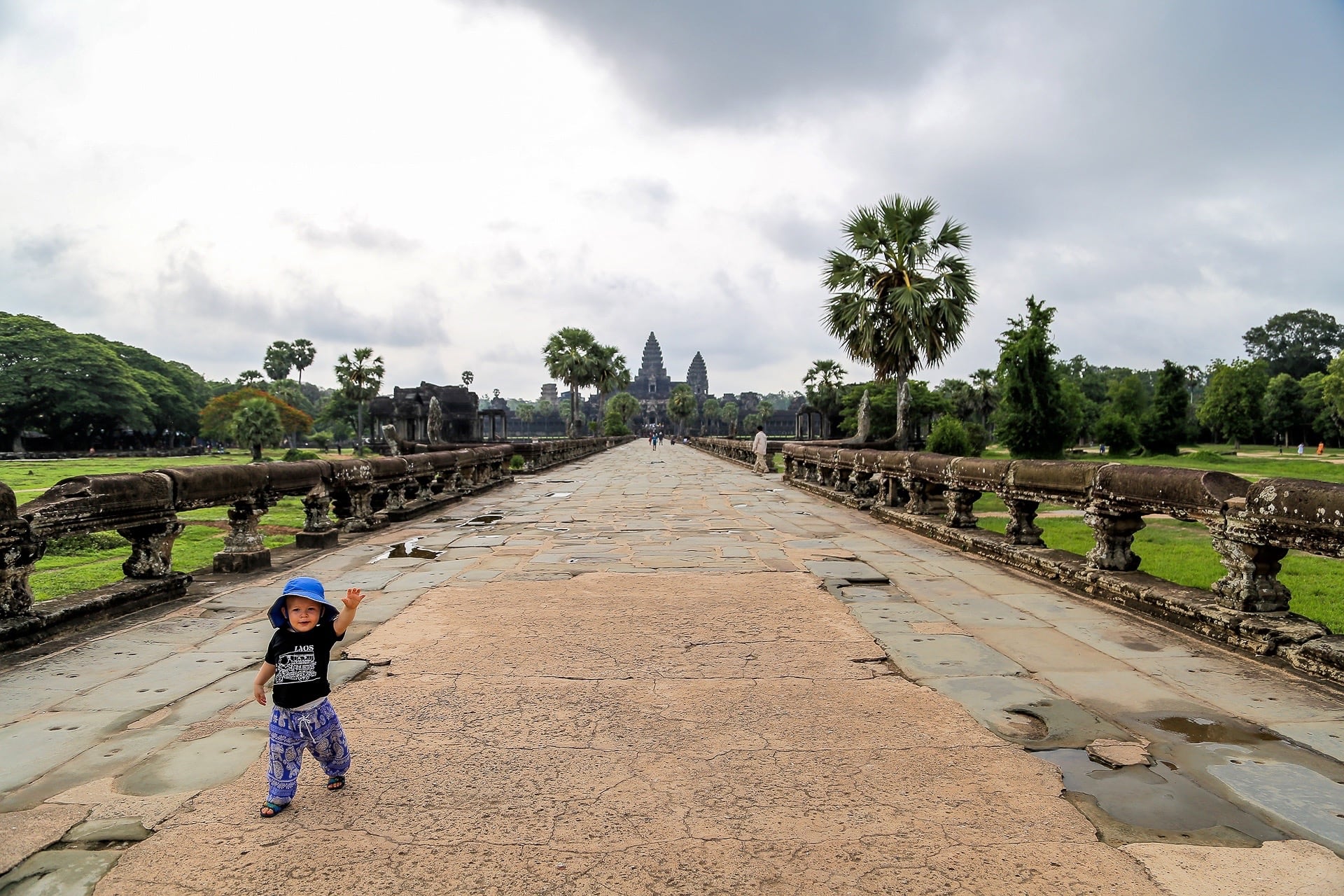
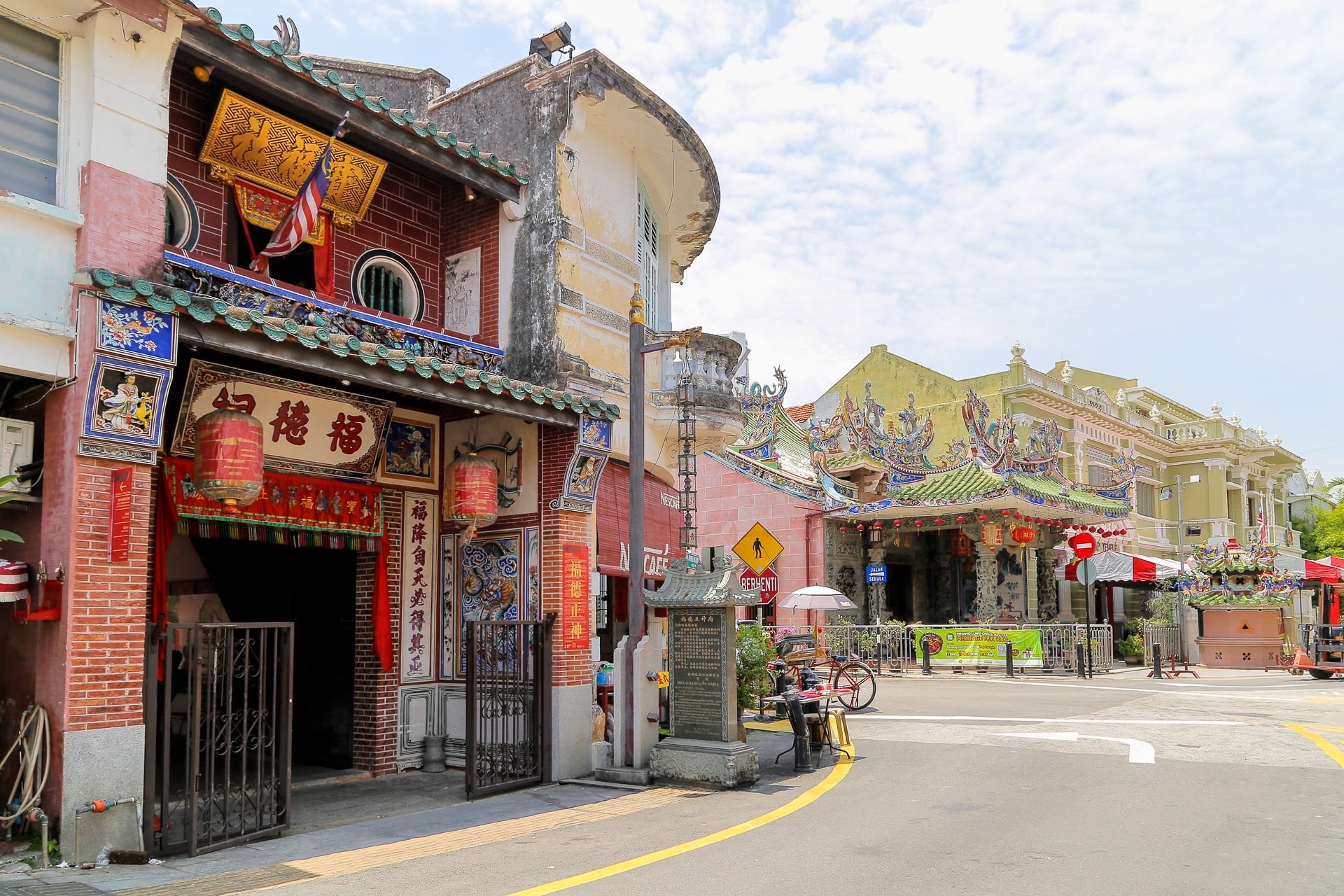
Your pictures are art gallery/ museum quality!! I especially love the two; the view of the grounds facing east and The halls of the temple. Of course, all of the pics with your two boys and wife are wonderful, as well. These temples look amazing to explore, and even though your boys are young you’ll always have these photos to remind them of all they’ve seen and experienced in their lives.
Thanks, Jan!